new posts in all blogs
Viewing: Blog Posts Tagged with: multicultural childrens literature, Most Recent at Top [Help]
Results 1 - 23 of 23
How to use this Page
You are viewing the most recent posts tagged with the words: multicultural childrens literature in the JacketFlap blog reader. What is a tag? Think of a tag as a keyword or category label. Tags can both help you find posts on JacketFlap.com as well as provide an easy way for you to "remember" and classify posts for later recall. Try adding a tag yourself by clicking "Add a tag" below a post's header. Scroll down through the list of Recent Posts in the left column and click on a post title that sounds interesting. You can view all posts from a specific blog by clicking the Blog name in the right column, or you can click a 'More Posts from this Blog' link in any individual post.

By:
Betsy Bird,
on 6/29/2016
Blog:
A Fuse #8 Production
(
Login to Add to MyJacketFlap)
JacketFlap tags:
picture book poetry,
African-American authors and illustrators,
Best Books of 2016,
2016 reviews,
Reviews 2016,
2016 poetry,
Reviews,
history,
poetry,
Simon and Schuster,
Atheneum,
Best Books,
Ashley Bryan,
multicultural children's literature,
African-American history,
Add a tag
 Freedom Over Me: Eleven slaves, their lives and dreams brought to life
Freedom Over Me: Eleven slaves, their lives and dreams brought to life
By Ashley Bryan
Atheneum (an imprint of Simon & Schuster)
$17.99
ISBN: 978-1481456906
Ages 9 and up
On shelves September 13th
Who gives voice to the voiceless? What are your credentials when you do so? When I was a teen I used to go into antique stores and buy old family photographs from the turn of the century. It still seems odd to me that this is allowed. I’d find the people who looked the most interesting, like they had a story to tell, and I’d take them home with me. Then I’d write something about their story, though mostly I just liked to look at them. There is a strange comfort in looking at the faces of the fashionable dead. A little twinge of momento mori mixed with the knowledge that you yourself are young (possibly) and alive (probably). It’s easy to hypothesize about a life when you can see that person’s face and watch them in their middle class Sunday best. It is far more difficult when you have no face, a hint of a name, and/or maybe just an age. Add to this the idea that the people in question lived through a man made hell-on-earth. When author/illustrator/artist Ashley Bryan acquired a collection of slave-related documents from the 1820s to the 1860s he had in his hands a wealth of untold stories. And when he chose to give these people, swallowed by history, lives and dignity and peace, he did so as only he could. With the light and laughter and beauty that only he could find in the depths of uncommon pain. Freedom Over Me is a work of bravery and sense. A way of dealing with the unimaginable, allowing kids an understanding that there is a brain, heart, and soul behind every body, alive or dead, in human history.
The date on the Fairchilds Appraisement is July 5, 1828. On it you will find a list of goods to be sold. Cows, hogs, cotton . . . and people. Eleven people, if we’re going to be precise (and we are). Most have names. One does not. Just names on a piece of paper almost 200-years-old. So Ashley Bryan, he takes those names and those people, and for the first time in centuries we get to meet them. Here is Athelia, a laundress who once carried the name Adero. On one page we hear about her life. On the next, her dreams. She remembers the village she grew up in, the stories, and the songs. And she is not alone in this. As we meet each person and learn what they do, we get a glimpse into their dreams. We hear their hopes. We wonder about their lives. We see them draw strength from one another. And in the end? The sale page sits there. The final words: “Administered to the best of our Judgment.”
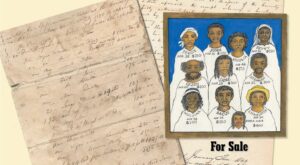 I have often said, and I say it to this day, that if there were ever a Church of Ashley Bryan, every last person who has ever met him or heard him speak would be a member. There are only a few people on this great green Earth that radiant actual uncut goodness right through their very pores. Mr. Bryan is one of those few, so when I asked at the beginning of this review what the credentials are for giving voice to the voiceless, check off that box. There are other reasons to trust him, though. A project of this sort requires a certain level of respect for the deceased. To attain that, and this may seem obvious, the author has to care. Read enough books written for kids and you get a very clear sense of those books written by folks who do not care vs. folks that do. Even then, caring’s not really enough. The writing needs to be up to speed and the art needs to be on board. And for this particular project, Ashley Bryan had a stiffer task at hand. Okay. You’ve given them full names and backgrounds and histories. What else do they need? Bryan gives these people something intangible. He gives them dreams. It’s right there in the subtitle, actually: “Eleven slaves, their lives and dreams brought to life.”
I have often said, and I say it to this day, that if there were ever a Church of Ashley Bryan, every last person who has ever met him or heard him speak would be a member. There are only a few people on this great green Earth that radiant actual uncut goodness right through their very pores. Mr. Bryan is one of those few, so when I asked at the beginning of this review what the credentials are for giving voice to the voiceless, check off that box. There are other reasons to trust him, though. A project of this sort requires a certain level of respect for the deceased. To attain that, and this may seem obvious, the author has to care. Read enough books written for kids and you get a very clear sense of those books written by folks who do not care vs. folks that do. Even then, caring’s not really enough. The writing needs to be up to speed and the art needs to be on board. And for this particular project, Ashley Bryan had a stiffer task at hand. Okay. You’ve given them full names and backgrounds and histories. What else do they need? Bryan gives these people something intangible. He gives them dreams. It’s right there in the subtitle, actually: “Eleven slaves, their lives and dreams brought to life.”
And so the book is a work of fiction. There is no amount of research that could discover Bacus or Peggy or Dora’s true tales. So when we say that Bryan is giving these people their lives back, we acknowledge that the lives he’s giving them aren’t the exact lives they led. And so we know that each person is a representative above and beyond the names on that page. Hence the occupations. Betty is every gardener. Stephen every architect. Dora every child that was born to a state of slavery and labored under it, perhaps their whole lives. And there is very little backmatter included in this book. Bryan shows the primary documents alongside a transcription of the sales. There is also an Author’s Note. Beyond that, you bring to the book what you already know about slavery, making this a title for a slightly older child readership. Bryan isn’t going to spend these pages telling you every daily injustice of slavery. Kids walk in with that knowledge already in place. What they need now is some humanity.
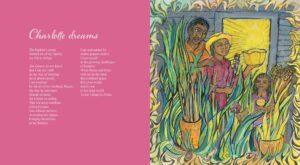 Has Mr. Bryan ever done anything with slavery before? I was curious. I’ve watched Mr. Bryan’s books over the years and they are always interesting. He’s done spirituals as cut paper masterpieces. He’s originated folktales as lively and quick as their inspirational forbears. He makes puppets out of found objects that carry with them a feeling not just of dignity, but pride. But has he ever directly done a book that references slavery? So I examined his entire repertoire, from the moment he illustrated Black Boy by Richard Wright to Susan Cooper’s Jethro and the Jumbie to Ashley Bryan’s African Folktales, Uh-Huh and beyond. His interest in Africa and song and poetry knows no bounds, but never has he engaged so directly with slavery itself.
Has Mr. Bryan ever done anything with slavery before? I was curious. I’ve watched Mr. Bryan’s books over the years and they are always interesting. He’s done spirituals as cut paper masterpieces. He’s originated folktales as lively and quick as their inspirational forbears. He makes puppets out of found objects that carry with them a feeling not just of dignity, but pride. But has he ever directly done a book that references slavery? So I examined his entire repertoire, from the moment he illustrated Black Boy by Richard Wright to Susan Cooper’s Jethro and the Jumbie to Ashley Bryan’s African Folktales, Uh-Huh and beyond. His interest in Africa and song and poetry knows no bounds, but never has he engaged so directly with slavery itself.
Could this have been done as anything but poetry? Or would you even call each written section poetry? I would, but I’ll be interested to see where libraries decide to shelve the book. Do you classify it as poetry or in the history section under slavery? Maybe, for all that it seems to be the size and shape of a picture book, you’d put it in your fiction collection. Wherever you put it, I am reminded, as I read this book, of Good Masters! Sweet Ladies! where every lord and peasant gets a monologue from their point of view. Freedom Over Me bears more than a passing similarity to Good Masters. In both cases we have short monologues any kid could read aloud in class or on their own. They are informed by research, and their scant number of words speak to a time we’ll never really know or understand fully. And how easy it would be to turn this book into a stage play. I can see it so easily. Imagine if you turned the Author’s Note into the first monologue and Ashley Bryan his own character (behold the 10-year-old dressed up as him, mustache and all). Since the title of the book comes from the spiritual “Oh, Freedom!” you could either have the kids sing it or play it in the background. And for the ending? A kid playing the lawyer or possibly Mrs. Fairchilds or even Ashley comes out and reads the statement at the end with each person and their price and the kids step forward holding some object that defines them (clothing sewn, books read, paintings, etc.). It’s almost too easy.
 The style of the art was also interesting to me. Pen, ink, and watercolors are all Mr. Bryan (who is ninety-two years of age, as of this review) needs to render his people alive. I’ve see him indulge in a range of artistic mediums over the years. In this book, he begins with an image of the estate, an image of the slaves on that estate, and then portraits and renderings of each person, at rest or active in some way. “Peggy” is one of the first women featured, and for her portrait Ashley gives her face whorls and lines, not dissimilar to those you’d find in wood. This technique is repeated, to varying degrees, with the rest of the people in the book. First the portrait. Then an image of what they do in their daily lives or dreams. The degree of detail in each of these portraits changes a bit. Peggy, for example, is one of the most striking. The colors of her skin, and the care and attention with which each line in her face is painted, make it clear why she was selected to be first. I would have loved the other portraits to contain this level of detail, but the artist is not as consistent in this regard. Charlotte and Dora, for example, are practically line-less, a conscious choice, but a kind of pity since Peggy’s portrait sets you up to think that they’ll all look as richly detailed and textured as she.
The style of the art was also interesting to me. Pen, ink, and watercolors are all Mr. Bryan (who is ninety-two years of age, as of this review) needs to render his people alive. I’ve see him indulge in a range of artistic mediums over the years. In this book, he begins with an image of the estate, an image of the slaves on that estate, and then portraits and renderings of each person, at rest or active in some way. “Peggy” is one of the first women featured, and for her portrait Ashley gives her face whorls and lines, not dissimilar to those you’d find in wood. This technique is repeated, to varying degrees, with the rest of the people in the book. First the portrait. Then an image of what they do in their daily lives or dreams. The degree of detail in each of these portraits changes a bit. Peggy, for example, is one of the most striking. The colors of her skin, and the care and attention with which each line in her face is painted, make it clear why she was selected to be first. I would have loved the other portraits to contain this level of detail, but the artist is not as consistent in this regard. Charlotte and Dora, for example, are practically line-less, a conscious choice, but a kind of pity since Peggy’s portrait sets you up to think that they’ll all look as richly detailed and textured as she.
Those old photographs I once collected may well be the only record those people left of themselves on this earth, aside from a name in a family tree and perhaps on a headstone somewhere. So much time has passed since July 5, 1828 that it is impossible to say whether or not the names on Ashley’s acquired Appraisement are remembered by their descendants. Do families still talk about Jane or Qush? Is this piece of paper the only part of them that remains in the world? It may not have been the lives they led, but Ashley Bryan does everything within his own personal capacity to keep these names and these people alive, if just for a little longer. Along the way he makes it clear to kids that slaves weren’t simply an unfortunate mass of bodies. They were architects and artists and musicians. They were good and bad and human just like the rest of us. Terry Pratchett once wrote that sin is when people treat other people as objects. Ashley treats people as people. And times being what they are, here in the 21st century I’d say that’s a pretty valuable lesson to be teaching our kids today.
On shelves September 13th.
Source: Galley sent from publisher for review.
Like This? Then Try:
Professional Reviews: A star from Kirkus
Misc: Interested in the other books Mr. Bryan has written or illustrated over the course of his illustrious career? See the full list on his website here.


By:
Betsy Bird,
on 3/30/2016
Blog:
A Fuse #8 Production
(
Login to Add to MyJacketFlap)
JacketFlap tags:
Reviews,
Best Books,
Carolrhoda Books,
multicultural children's literature,
Vaunda Micheaux Nelson,
multicultural picture books,
Lerner Publishing Group,
Elizabeth Zunon,
African-American books,
Best Books of 2016,
2016 picture books,
2016 reviews,
Reviews 2016,
Add a tag
 Don’t Call Me Grandma
Don’t Call Me Grandma
By Vaunda Micheaux Nelson
Illustrated by Elizabeth Zunon
Carolrhoda Books (a division of Lerner)
$19.99
ISBN: 978-1-4677-4208-5
Ages 4-7
On shelves now.
In 2016 a picture book won a Newbery Award. Which is to say, a picture book was declared the best-written work for children between the ages of 0-14. After its win there was a fair amount of speculation about what precisely the Newbery committee was trying to say with their award. For that matter, there was a fair amount of speculation about what it meant for children’s literature in general. Are we, as a people, less tolerant of loquacious books? Considering the fact that a book with 592 pages was a runner-up, I think we’re doing just fine in terms of wordy titles. Just the same, I hope that if anything comes out of this surprise award it’s a newfound appreciation for the picture book’s art of restraint. A good picture book shows but doesn’t tell. Don’t believe me? Read the original manuscript of Sendak’s Where the Wild Things Are where he spells everything out for the reader. All these thoughts were in my head recently when I read the remarkable Don’t Call Me Grandma by Vaunda Micheaux Nelson. Tackling the almost nonexistent subcategory of grouchy great-grandparents, Ms. Nelson deftly encapsulates a woman’s personality and lifetime of experiences in a scant 32 pages.
“Great-grandmother Nell is scary.” You got that right, kid. She also does not hug, or kiss, or chase her great-grandchild for fun. Instead she sips an intoxicating beverage from a glass bedecked with a spider. She serves up fish for breakfast, buggy eyes and all. But she also has a vanity full of mysterious perfumes, lipstick as red as rubies, and memories as sharp and painful as the day they were made. And when her great-granddaughter sneaks a kiss, Nell is still scary. But that’s okay. “…I like her that way.”
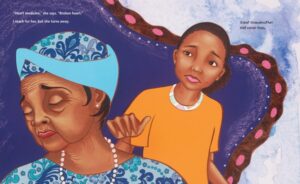 First and foremost, this is not a fuzzy grandparent (or great-grandparent) book. There are plenty of fuzzy books out there, filled to brimming with warm snuggly feelings. If that is the kind of book you require then grab yourself the nearest Nancy Tillman and content yourself accordingly. What we have here instead is a kind of character study. Whatever expectations you carry into this book, they will be upended by the text. Nell is an amazing character, one that I’ve never seen in book of this sort. Her prickly nature may well hide that “broken heart” she mentions obliquely, but it could just as easily hide more prickles. We get three distinct memories of her past, but it’s a single wordless two-page spread that probably says more about her than anything else. As an adult, I found myself speculating about her life. How perhaps she had dreams of dancing professionally but that she put those dreams aside when she had her children at a very young age. No kid is going to read into Nell what I have. That’s what makes reading this book so dynamic. Come for the prickly relative. Stay for the enticing, unknowable back story.
First and foremost, this is not a fuzzy grandparent (or great-grandparent) book. There are plenty of fuzzy books out there, filled to brimming with warm snuggly feelings. If that is the kind of book you require then grab yourself the nearest Nancy Tillman and content yourself accordingly. What we have here instead is a kind of character study. Whatever expectations you carry into this book, they will be upended by the text. Nell is an amazing character, one that I’ve never seen in book of this sort. Her prickly nature may well hide that “broken heart” she mentions obliquely, but it could just as easily hide more prickles. We get three distinct memories of her past, but it’s a single wordless two-page spread that probably says more about her than anything else. As an adult, I found myself speculating about her life. How perhaps she had dreams of dancing professionally but that she put those dreams aside when she had her children at a very young age. No kid is going to read into Nell what I have. That’s what makes reading this book so dynamic. Come for the prickly relative. Stay for the enticing, unknowable back story.
What I would really like to praise in this review, if nothing else, is just how deftly author Vaunda Micheaux Nelson parses words into sentences that swell with meaning. Take, for example, the moment when our heroine enters Great-Grandmother Nell’s bedroom. She considers playing with the cloth ballerina on the best but abstains, saying, “her expression makes me think she might tell.” Later she kisses her great-grandmother in her sleep. “Even asleep, Great-Grandmother Nell is scary. But I like her that way.” The very last line? “She won’t know”. It would be fascinating to see Nelson’s original manuscript. Was it just this sparse and spare? Or was it much longer and cut down to the bone in the editing process? Whichever it was, it works.
 The child in this book is much like the child who will be reading it with an adult. Both she and they sense that there is more at work here than meets the eye. And it is the art by Elizabeth Zunon that backs that feeling up. Elizabeth Zunon has been a force to reckon with for years. I first noticed her when she illustrated William Kamkwamba’s The Boy Who Harnessed the Wind, though I unknowingly had already been a fan of hers when she illustrated Jeanne Harvey’s My Hands Sing the Blues. In Don’t Call Me Grandma she begins with a straightforward contemporary story. Even then, her endpapers start telling the tale long before the words do (not counting the title). She fills these early pages with strings of pearls. Fat pearls, small pearls, pink and gray and white pearls. Note that in the text there is just one mention of those pearls, and it’s in the context of a lot of other things on Nell’s dressing table. But Zunon is getting a grip on her personality in her own way. Because of her we get a distinct sense of Great-Grandmother’s style, poise, and dignity. There are fun little details too, like the family peering out through the window as Nell gives a singing bird what for and how to. Zunon also lends Nell a humanity on the sidelines. When her great-granddaughter looks around her room we see Nell observing affectionately from the sides (though she’d be the first to deny it if you accosted her with the evidence). Then there are the memories. Depicted as splotchy watercolors, Zunon subtly changes her style to indicate how some memories are crystal clear even as they blur and go soft around the edges. The two-page spread of objects representing other memories (everything from photographs of Civil Rights marchers to tickets to an Alvin Ailey ballet) will require giving child readers some context. Nothing wrong with that. Sit them down and explain each thing you see. Don’t recognize something? Look it up!
The child in this book is much like the child who will be reading it with an adult. Both she and they sense that there is more at work here than meets the eye. And it is the art by Elizabeth Zunon that backs that feeling up. Elizabeth Zunon has been a force to reckon with for years. I first noticed her when she illustrated William Kamkwamba’s The Boy Who Harnessed the Wind, though I unknowingly had already been a fan of hers when she illustrated Jeanne Harvey’s My Hands Sing the Blues. In Don’t Call Me Grandma she begins with a straightforward contemporary story. Even then, her endpapers start telling the tale long before the words do (not counting the title). She fills these early pages with strings of pearls. Fat pearls, small pearls, pink and gray and white pearls. Note that in the text there is just one mention of those pearls, and it’s in the context of a lot of other things on Nell’s dressing table. But Zunon is getting a grip on her personality in her own way. Because of her we get a distinct sense of Great-Grandmother’s style, poise, and dignity. There are fun little details too, like the family peering out through the window as Nell gives a singing bird what for and how to. Zunon also lends Nell a humanity on the sidelines. When her great-granddaughter looks around her room we see Nell observing affectionately from the sides (though she’d be the first to deny it if you accosted her with the evidence). Then there are the memories. Depicted as splotchy watercolors, Zunon subtly changes her style to indicate how some memories are crystal clear even as they blur and go soft around the edges. The two-page spread of objects representing other memories (everything from photographs of Civil Rights marchers to tickets to an Alvin Ailey ballet) will require giving child readers some context. Nothing wrong with that. Sit them down and explain each thing you see. Don’t recognize something? Look it up!
A woman of my acquaintance used to make a big show of objecting to any and all picture books that depicted grandmothers as white-haired, doddering old women, tottering on the very edge of the grave. To her mind, there should be at least as many books that show those women as resourceful, spry, and full of energy. Great-Grandmothers probably have few books where they’re wrecking havoc with the universe. Generally speaking they just dodder and die. There will be no doddering and certainly no dying in Don’t Call Me Grandma, though. Nell isn’t just a character. She comes off the page like a full-blown human being, warts and all (just an expression – Nell would take me to the cleaners if she heard me indicating she has any warts). Sharp and smart, this is one of those picture books I’d like to see more of. Which is to say, stories I’ve never seen before.
On shelves now.
Source: Final copy sent from publisher for review.
Like This? Then Try:
Professional Reviews:


By:
Betsy Bird,
on 4/28/2015
Blog:
A Fuse #8 Production
(
Login to Add to MyJacketFlap)
JacketFlap tags:
Tracey Baptiste,
Algonquin Young Readers,
Reviews 2015,
2015 reviews,
2015 fantasy,
multicultural,
Reviews,
fantasy,
middle grade fantasy,
multicultural fiction,
multicultural children's literature,
multicultural middle grade,
Add a tag
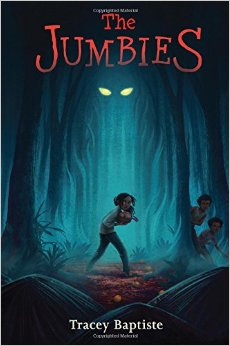 The Jumbies
The Jumbies
By Tracey Baptiste
Algonquin Young Readers
$15.95
ISBN: 9781616204143
Ages 9-12
On shelves now
“All great literature is one of two stories; a man goes on a journey or a stranger comes to town.” So sayeth Leo Tolstoy (at least in theory). Regardless of whether or not it’s actually true, it is fun to slot books into the different categories. And if I were to take Tracey Baptiste’s middle grade novel The Jumbies with the intention of designating it one type of story or another, I think I’d have to go with the latter definition. A stranger comes to town. Not quite true though, is it? For you see, in this particular book the stranger isn’t coming to town so much as infesting it. And does she still count as a stranger when she, technically was there first? It sounds a bit weird to say, “All great literature is one of two stories; a man goes on a journey or a creature comes to a village where it is the people who are the strangers” but you could make a case for that being the tale The Jumbies brings to light. Far more than just your average spooky supernatural story, Baptiste uses the underpinnings of a classic folktale to take a closer look at colonization, rebellion, and what it truly takes to share the burden of tolerating the “other”. Plus there are monsters. Gotta love the monsters.
Corinne La Mer isn’t what you might call a superstitious sort. Even when she chases an agouti into a forbidden forest she’s able to justify to herself why it looked as though a pair of yellow eyes followed her out. If she told other people about those eyes they’d say she ran across a jumbie, one of the original spooky denizens of her Caribbean island. Corinne’s a realist, though, so surely there’s another answer. And she probably would have put the whole incident out of her mind anyway, had Severine not appeared in her hut one day. Severine is beautiful and cunning. She’s been alone for a long long time and she’s in the market for a loving family. Trouble is, what Severine wants she usually gets, and Corinne may find that she and her father are getting ensnared in a dangerous creature’s loving control – whether they want to be or not. A tale based loosely on the Haitian folktale “The Magic Orange Tree.”
A bit of LOST, a bit of Beloved, and a bit of The Tempest. That’s the unusual recipe I’d concoct if I were trying to describe this book to adults. If I were trying to describe it to kids, however, I’d have some difficulty. Our nation’s library and bookstore shelves aren’t exactly overflowing with children’s novels set in the Caribbean. Actually, year or so ago I was asked to help co-create a booklist of Caribbean children’s literature with my librarian colleagues. We did pretty well in the picture book department. It was the novels that suffered in comparison. Generally speaking, if you want Caribbean middle grade novels you’d better be a fan of suffering. Whether it’s earthquakes (Serafina’s Promise), escape (Tonight By Sea), or the slave trade (My Name Is Not Angelica) Caribbean children’s literature is rarely a happy affair. And fantasy? I’m not going to say there aren’t any middle grade novels out there that make full and proper use of folklore, but none come immediately to mind. Now Ms. Baptiste debuted a decade ago with Angel’s Grace (called by Horn Book, “a promising first novel” with “An evocative setting and a focused narrative”). In the intervening ten years we hadn’t heard much from her. Fortunately The Jumbies proves she’s most certainly back in the game and with a book that has few comparable peers.
My knowledge of the Caribbean would fit in a teacup best enjoyed by a flea. What I know pretty much comes from the children’s books I read. So I am not qualified to judge The Jumbies on its accuracy to its setting or folkloric roots. When Ms. Baptiste includes what appears to be a family with roots in India in the narrative, I go along with it. Then, when the book isn’t looking, I sneak off to Wikipedia (yes, even librarians use Wikipedia from time to time) and read that “Indo-Trinidadian and Tobagonian are nationals of Trinidad and Tobago of India ancestry.” We Americans often walk around with this perception that ours is the only ethnically diverse nation. We have the gall to be surprised when we discover that other nations have multicultural (for lack of a better word) histories of their own. So it is that Corinne befriends Dru, an Indio-Trinidadian with a too large family.
The writing itself makes for a fun read. I wouldn’t label it overly descriptive or lyrical, necessarily, but it gets the job done. Besides, there are little moments in the text that I thought were rather nice. Lines like “Corinne remembered when they had buried her mama in the ground like a seed.” Or, on a creepier note, “A muddy tear spilled onto her cheek, then sprouted legs and crawled down her body.” What I really took to, more than anything else, was the central theme of “us” and “them”. Which is to say, there is no “us” and “them”, really. It’s a relationship. As a local witch says later in the story, “Our kind? What do you know about our kind and their kind, little one? You can’t even tell the difference.” Later she says it once again. “Their kind, your kind, is there a difference?” This is an island where the humans arrives and pushed out the otherworldly natives. When the natives fight back the humans are appalled. And as we read the story, we see that we are the oppressors here, to a very real extent. These jumbies might fight and hit and hurt and steal children, but they have their reasons. Even if we’ve chosen to forget what those might be.
I have a problem. I can’t read books for kids like I used to. Time was, when I first started in this business, that I could read a book like The Jumbies precisely as the author intended. I approached the material with all the wide-eyed wonder of a 10-year-old girl. Then I had to go and give birth and what happens? Suddenly I find that everything’s different and that I’m now reading the books as a parent. Scenes in The Jumbies that wouldn’t have so much as pierced my armor when I was younger now stab me directly through the heart. For example, there is a moment in this book when Dru recounts seeing her friend Allan stolen by the douens. As his mother called his name he turned to her, but his feet faced the other way, walking him into the forest. That just killed me. Kids? They’ll find it nicely creepy, but I don’t know that they’ll not entirely understand the true horror the parents encounter so that later in the book when a peace is to be reached, they have a real and active reason for continuing to pursue war. In this way the book’s final resolution almost feel too easy. You understand that the humans will agree on a peace if only because the jumbies have them outnumbered and outmanned. However, the hate and fear is going to be lingering for a long long time to come. This would be an excellent text to use to teach conflict resolution, come to think of it.
In her Author’s Note at the back of the book, Tracey Baptiste writes, “I grew up reading European fairy tales that were nothing like the Caribbean jumbie stories I listened to on my island of Trinidad. There were no jumbie fairy-tale books, though I wished there were. This story is my attempt at filling that gap in fairy-tale lore.” And fill it she does. Entrancing and engaging, frightening but never slacking, Baptiste enters an all-new folktale adaptation into our regular fantasy lore. Best suited for the kids seeking lore where creatures hide in the shadows of trees, but where they’re unlike any creatures the kids have seen before. Original. Haunting.
On shelves now.
Source: Galley sent from publisher for review.
Like This? Then Try:
Misc: Read several excerpts here.
Video:
And here’s the book trailer for you:

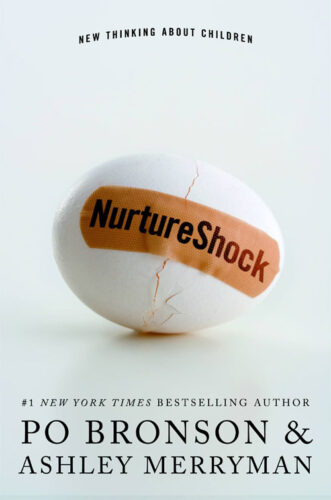 For my birthday my husband picked me up a copy of the bestselling book NurtureShock by Po Bronson and Ashley Merryman. To be frank, I hadn’t heard of it. Though its been called “The Freakonomics of child rearing” and lauded by reviewer after reviewer it’s from the world of adult books. I traipse there but rarely. Still, I’m great with child (ten days away from the due date, in fact) and this promised to be a fascinating read. Covering everything from the detrimental effects that come with telling a kid that they’re smart to aggression in the home I settled down and devoured it with pleasure. In doing so, one chapter in particular caught my eye. Chapter Three: “Why White Parents Don’t Talk About Race: Does teaching children about race and skin color make them better of or worse?”
For my birthday my husband picked me up a copy of the bestselling book NurtureShock by Po Bronson and Ashley Merryman. To be frank, I hadn’t heard of it. Though its been called “The Freakonomics of child rearing” and lauded by reviewer after reviewer it’s from the world of adult books. I traipse there but rarely. Still, I’m great with child (ten days away from the due date, in fact) and this promised to be a fascinating read. Covering everything from the detrimental effects that come with telling a kid that they’re smart to aggression in the home I settled down and devoured it with pleasure. In doing so, one chapter in particular caught my eye. Chapter Three: “Why White Parents Don’t Talk About Race: Does teaching children about race and skin color make them better of or worse?”
Culling several studies together, the book makes the point that while, “Nonwhite parents are about three times more likely to discuss race than white parents; 75% of the latter never, or almost never, talk about race.” Studies that required that parents do so with their young children saw white parent after white parent balk at the idea. There’s this notion out there that children are little innocents and that pointing out race will somehow taint their race blind worldview. Turns out, nothing could be further from the truth. Anyone who has ever had a kid will know that they like to categorize themselves and their friends into groups. Race is the easiest way to do so, so from a very early age the children will be prone to “in-group favoritism”.
I thought this through. My kiddo attends a daycare here in Harlem. In her Preschool A class she is only one of two children who are not African-American or of mixed race. It’s a great place and certainly it assuages my white guilt, having my kid in such a diverse environment. But according to NurtureShock it isn’t enough to just plop your child in what you assume will be a color-blind environment. As the book says, “We might imagine we’re creating color-blind environments for children, but differences in skin color or hair or weight are like differences in gender – they’re plainly visible.”
And as I read this I realized that I myself have done the exact same balking at race references as mentioned in the book. I’ve an amazing personal of library of diverse children’s books accumulated through my job and the donations of friends and family members alike from over the years. My job in giving my child a sense of diversity and multiculturalism is therefore done, right? Not so much. Take the case of Busing Brewster by Rich Michelson. This is a book that years ago appeared on the New York Times Best Illustrated list (whose committee, full disclosure, I served on). It’s an older picture book, and one that I’d probably recommend for the 4-7-year-old crowd. Still, it’s a picture book so one day the small Bird picked it up and asked to be read it. She is, I should point out, two-years-old. And as I read it to her, I found myself softening the harsh elements. If you’re unfamiliar with it, in this book two boys are integrated into a new school in the 1960s. In doing so they face outright racism varying from yelling protestors to bricks thrown through their school bus windows. Was my two-year-old ready for this? I figured probably not, but watching myself edit the book for her level turned out to be a strange pastime. I wasn’t just editing out the hatred but was also failing to explain why the kids were moving to a new school at all. It was as if I was afraid that mentioning race to her would cause her to say embarrassing things at daycare the next day, something I wanted desperately to avoid. An understandable reaction, but the right one? I’m not sure about that at all.
Going back to the book, the more I read the more I realized that if we want parents to have serious discussions about race with their four and five and six-year-olds then we need to have books that help to do this. So as I read I kept a particular eye out for moments when the authors would mention using literature with kids to drill home various points. Though they never come out and say that children’s books can be useful in this regard, there are several incidents recounted that name check various books. One such title is Twas the Night B’Fore Christmas: An African-American Version by Melodye Benson Rosales. Originally published in 1996 the title was criticized for its use of colloquial language. As the Horn Book Guide said at the time, “Painful dialect (‘The stockin’s was laid / by the chimney wit’ care, / For the chil’ren hoped Santy Claus / soon would be there’) and garish illustrations make this ‘African-American version’ seem more like an unintentional parody of Clement Moore’s 1822 poem. So why isn’t anybody laughing?” In NurtureShock the book was used to combat children’s stereotypes of whether or not Santa was black or white. For the same thing, one would probably turn these days to the Rachel Isadora version instead. Disappointingly the only other time literature is mentioned is when a study is recounted where kids read historical biographies of Jackie Robinson. Still, one gathers that these were not from books but rather textbooks or printed bios made specifically for the study.
What we can take away from this are the ages at which kids need to learn about race. At one moment a study was conducted between first graders and third graders. At the end we read, “The researchers found this worked wonders on the first-grade children. Having been in the cross-race study groups led to significantly more cross-race play. But it made no difference on the third-grade children. It’s possible that by third grade, when parents usually recognize it’s safe to start talking a little about race, the developmental window has already closed.”
With that in mind, I decided I needed to find a booklist that would best help parents frame a discussion of race or other cultural factors with their younger children. Which was about the time I realized that finding such a list was incredibly difficult. I’m not saying it doesn’t exist. I’m sure there must be some out there. I just couldn’t figure out where they were hiding. Even lists like SLJ’s recent Culturally Diverse Books list and subsequent Expanded Cultural Diversity booklist place the bulk of importance on books for older children. Books for younger kids almost never mention race specifically in any context.
So I decided to do what librarians do when they can’t find the resources they need. I made a book list that people could use to discuss difficult subjects with younger kids. And to my amazement, it was incredibly hard to create. Not too long ago I had written a post about Casual Diversity in children’s literature. Well, apparently Casual Diversity is a very easy concept to put in a book for kids. In fact, as I’ve gone through list after list of diverse works of children’s literature, what I keep finding is that the tendency is towards just making a character one race or another without discussing what that means (a criticism of “casual diversity” that cropped up at the time of the post itself).
In constructing this list I also tried like the devil to include books that could be used to discuss their individual issues without lapsing into painful didacticism. No mean feat. For the most part, books about race or religion or alternative lifestyles will either make the situation seem completely normal (which is good, and which we also need) or they’ll slap some sappy “message” all over the puppy making it essentially useless as a piece of literature.
The final result is below. If I were to say the ages this was for I’d go with 4-8 or so. I figured it didn’t make sense to necessarily limit it to race, since discussions of race and alternative lifestyles would also apply. NurtureShock includes the fascinating fact that a lot of white parents feel perfectly comfortable drilling home the fact that boys and girls are equal, while ignoring the issues of race entirely. So I’ve eschewed gender equality books (which are fairly prevalent anyway) and limited this to other “differences” a kiddo might pick up on. If you have titles you’d add to this, do let me know what they are.
A Picture Book Reading List for Discussing Race, Religion, and Alternative Lifestyles with the Young

She Sang Promise: The Story of Betty Mae Jumper, Seminole Tribal Leader by Jan Godown Annino, illustrated by Lisa Desimini – Finding picture books about Native Americans is hard to begin with. Now try finding some that actually discuss the prejudices and lives they’ve lead. I looked through Debbie Reese’s recent list of Resources and Kid Lit About American Indians but was unable to find much of anything for young ages that could discuss the prejudice faced by Native American children (or their trials historically) for the picture book set. Insofar as I can tell, you have to turn to real world history to get anywhere near that subject. With that in mind, I decided to go with Annino’s amazing bio of the too little known Betty Mae Jumper, the first female Seminole Tribal Leader. In the course of this story kids learn about the prejudices not just facing the Seminoles historically but also within their own tribe and towards women nationally. There are just loads of jumping off discussion points to be plumbed here.
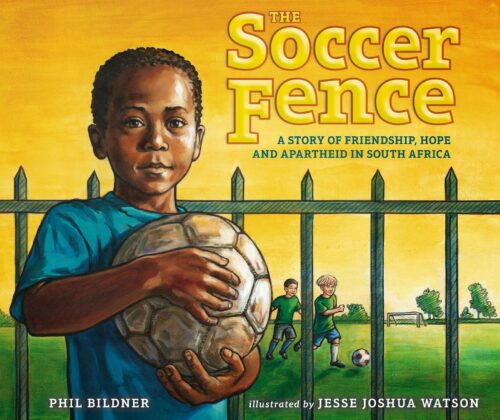
The Soccer Fence: A Story of Friendship, Hope, and Apartheid in South Africa by Phil Bildner, ill. Jesse Joshua Watson – Picture books that deal with historical racism tend to be preferred by teachers, and there are reasons for that. In NurtureShock the study where kids were given different texts on Jackie Robinson ends with this rather fascinating selection: “She notes the bios were explicit, but about historical discrimination. ‘If we’d had them read stories of contemporary discrimination from today’s newspapers, it’s quite possible it would have made the whites defensive, and only made the blacks angry at the whites’.” Hm. Well, certainly finding contemporary picture books about racism towards African-Americans is remarkably difficult. Sometimes authors find that even setting the books in America can be hard. Sure you have books like A Taste of Colored Water from time to time (which I have included on this list), but anything recent is eschewed. So for authors that want to include more recent kids, South Africa has proven ripe for books like Bildner’s here. Initially this book reminded me of the well meaning but ultimately flawed Desmond and the Very Mean Word: A Story of Forgiveness by Desmond Tutu. Tutu’s book, however, simplified the issue of race to a watered down non-point. As NurtureShock says, lots of parents use vague terms like “Everybody’s equal” or “God made all of us” or “Under the skin, we’re all the same” to talk about race. That’s what Tutu’s book did, even when telling the story of white and black characters. Bildner’s book isn’t perfect and it verges on the idealistic in terms of different races coming together, but after a couple rereads I came to the decision that ultimately it’s a mighty useful tool.

A Taste of Colored Water by Matt Faulkner – I remember when this book first came out. It got starred reviews from places like Kirkus but I wasn’t particularly interested in it. The premise, as you might be able to tell from the cover, involved two kids who heard the term “colored water” and misinterpreted it literally. Faulkner (who currently has the graphic novel Gaijin: American Prisoner of War about a mixed-race kid in an internment camp out on shelves) isn’t the kind of author afraid of shying away from a difficult subject. In many ways this remains his best known work.

Be Good to Eddie Lee by Virginia M. Fleming – I dare you to find me a book more recent than this 1997 title that discusses Down Syndrome in such a straightforward context. Books that discuss kids and disabilities are few and far between. It got great reviews when it first came out (and Floyd Cooper did the art!). It also has the guts to have a character who says things like, “God didn’t make mistakes, and Eddie Lee was a mistake if there ever was one.” Recently publishers have been doing better when it comes to books about autism, but it’s almost as if they think we can only handle one disability at a time. Publish books on more than one issue? Insanity! Only Albert Whitman Books really tries to do quality issues but even they haven’t touched on Down Syndrome. It’s almost as if it was a big issue in the 80s and 90s and then disappeared from the public conversation. Now it’s all peanut allergies and ADD.
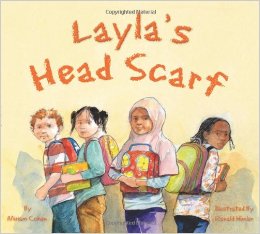
Layla’s Head Scarf by Miriam Cohen, illustrated by Ronald Himler – We get close to didactic here without ever quite tipping over. Finding good books about contemporary Muslim kids isn’t impossible, but it certainly isn’t easy to do. And books that actually talk about what people wear in school? Rarities. This one was very young and did a good job (though, alas, it referred to the head scarf as simply a head scarf and not by the proper term “hijab”).

10,000 Dresses by Marcus Ewert, illustrated by Rex Ray – As it turns out, finding a book about gay parents that actually discusses the issue does not exist. Or maybe it does and I just missed it entirely. Instead, what I was able to find were a couple books about boys that wear girls’ clothing. Long before that atrocious My Princess Boy hit the shelves, Ewert wrote a book where a boy honest-to-goodness identified as a girl. This is, to the best of my knowledge, the only book I’ve encountered to go the distance in that respect AND it had a story above and beyond its message.
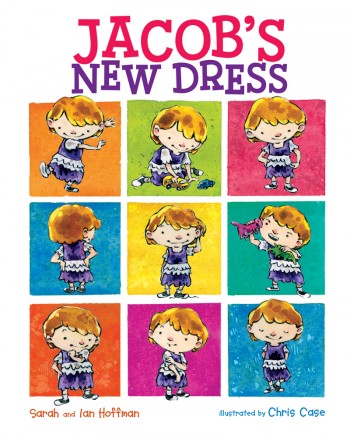
Jacob’s New Dress by Sarah and Ian Hoffman, illustrated by Chris Case – And this is the most recent boys-in-dresses book (though the art of Morris Micklewhite and the Tangerine Dress is quite lovely as well, so check out the Seven Impossible Things posting on Gender-Nonconforming Picture Books if you get a chance). What I really like about this book, though, is how instructional it is to parents. When Jacob specifies his preferences for dresses his mother and father definitely have to pause and think about how to handle the information but their responses are really quite grand. Jacob doesn’t identify as a girl, but his desire to wear dresses makes him stand out. No doubt.

Big Red Lollipop by Rukhsana Khan, illustrated by Sophie Blackall – As I mentioned before, Muslim kids in picture books are few and far between. And for the most part this book is just an example of Casual Diversity rather than any overt lessons. But skillful parents and teachers could certainly place the book’s story in context. Talking about immigrants to America and how there are different rules and mores in one country vs. another. Plus it’s one of my very favorite books of all time and any excuse to post it is good enough for me.
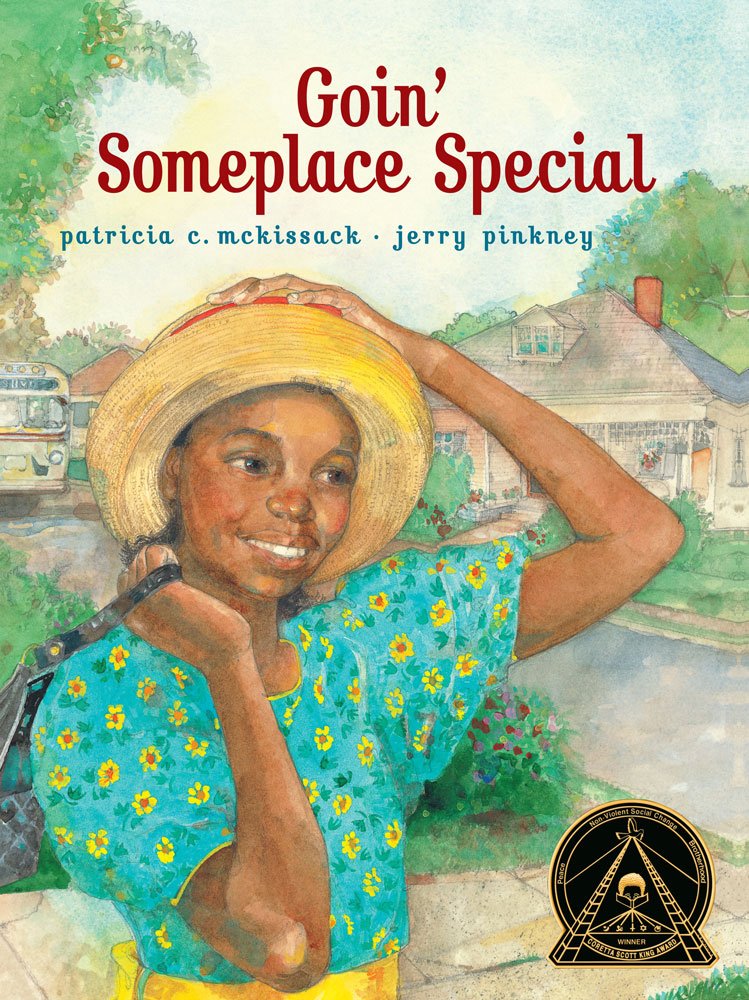
Goin’ Someplace Special by Patricia McKissack, illustrated by Jerry Pinkney – To be honest, there are a fair number of historical picture books like this one that discuss historical racism. I figured I’d put a couple on this list, but one the best may well be McKissack’s here. Here we have a kid who actually faces racism firsthand. There’s a reason schools assign this one every single summer for summer reading. As the Kirkus review put it, “Every plot element contributes to the theme, leaving McKissack’s autobiographical work open to charges of didacticism. But no one can argue with its main themes: segregation is bad, learning and libraries are good.”

Busing Brewster by Rich Michelson, illustrated by R.G. Roth – Part of what I like so much about this book is that it’s not just a case of discussing racial differences. The book’s concentration on busing and integration is an essential part of American history that simply cannot be ignored. Add in the fact that the white bully in the book is seen getting essentially indoctrinated into his particular brand of racism by his father, and you’ve a darn good book on a difficult subject. As I mentioned before, reading it to my two-year-old proved difficult, but at the very least I should have given it some historical context. Next time.

First Day in Grapes by L. King Perez, illustrated by Robert Casilla – I ran into the same problem with Latino characters that I found with Native Americans. Unless we’re talking about specific historical people who faced challenges, books with Latinos often eschew controversial aspects. This was one of the very few I could find that talks about contemporary migrant kids. There are a couple others (Armando and the Blue Tarp School by Edith Hope Fine and Judith Pinkerton Josephson comes to mind) but I think I liked this one best. The didacticism is low-key and the storyline doesn’t exist solely to support the message. That Pura Belpre Honor on the cover ain’t there for nothing.
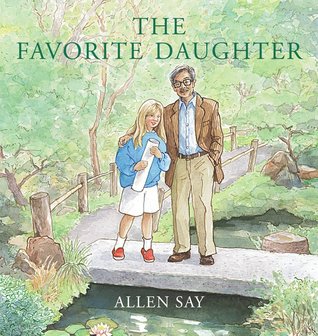
The Favorite Daughter by Allen Say – I’m listing these books alphabetically by author but if I were to list them in terms of importance then I might have considered making this one of the first on the list. I did think about adding My Name Is Yoon by Helen Recorvits and/or The Name Jar by Yangsook Choi to this list but Say’s book is just so much gutsier in so many ways. Yuriko gets teased in school about her name and hair (she’s blond with Asian features) and faces other examples of prejudice. Her response is to change her name to “Michelle”, a move that gives her father reason to guide her back to her roots, so to speak. It’s a book done almost entirely in dialogue (rare in and of itself) and so smart. You could also add Cleversticks by Bernard Ashley or Yoko by Rosemary Wells to this list of titles too, by the way.

The Sneetches and Other Stories by Dr. Seuss – Well, why not? Seuss was the lesson man back before it was cool. And when I mentioned this post to my husband he pointed out that when we were in school, The Sneetches was the gold standard for talking about prejudice and race. Sure it’s a great big green starred metaphor, but if we feel like it no longer has a place in our schools then we’re just not paying attention.
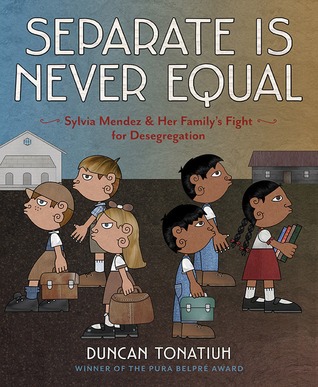
Separate Is Never Equal: Sylvia Mendez & Her Family’s Fight for Desegregation by Duncan Tonatiuh – I first heard Sylvia’s story last year when I reviewed When Thunder Comes: Poems for Civil Rights Leaders by J. Patrick Lewis. As I mentioned before, Latino fictional stories are tricky. Historical notes are rare, though, and this story is absolutely beautifully done. The discussion isn’t just of race but shows how skin color really affected people’s prejudices during this time.

I Will Come Back for You by Marisabina Russo – Well, if we’re talking about race then are we also talking about the Holocaust? It’s a legitimate question. Marjorie Ingall recently wrote a very smart piece for Tablet Magazine about whether or not young children need to learn about the Holocaust where she name checked this book. Her post ties in beautifully with the NurtureShock chapter, in that she points out that if you do not provide the lesson for your kids they’re just going to pick it up somewhere else in a form you probably don’t approve of. This book puts you in the kids’ shoes (and NOT in a concentration camp). Just good for opening discussions.
Definitely there are books that could fit on this list. So list ‘em!


By:
Betsy Bird,
on 5/1/2014
Blog:
A Fuse #8 Production
(
Login to Add to MyJacketFlap)
JacketFlap tags:
Reviews,
Scholastic,
Best Books,
multicultural fiction,
multicultural children's literature,
Varian Johnson,
Arthur A. Levine,
middle grade realistic fiction,
multicultural middle grade,
Best Books of 2014,
Reviews 2014,
2014 reviews,
2014 middle school fiction,
2014 realistic fiction,
middle school novels,
Add a tag
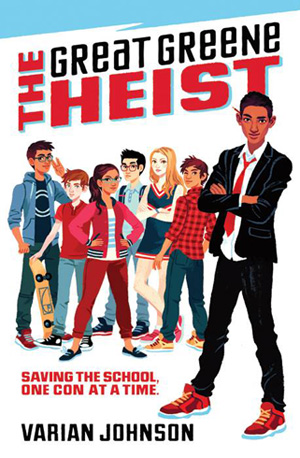 The Great Greene Heist
The Great Greene Heist
By Varian Johnson
Arthur A. Levine Books (an imprint of Scholastic)
$16.99
ISBN: 978-0-545-52552-7
Ages 10 and up
On shelves May 27th
What is the ultimate child fantasy? I’m not talking bubble gum sheets or wizards that tell you you’re “the chosen one”. Let’s think a little more realistically here. When a kid looks at the world, what is almost attainable but just out of their grasp for the moment? Autonomy, my friends. Independence. The ability to make your own rules and to have people fall in line. Often this dream takes the form of numerous orphan novels (it’s a lot easier to be independent if you don’t have any pesky parents swooping about), tales in which the child is some form of royalty (orphaned royalty, nine times out of ten), and other tropes. But for some kids, independence becomes a lot more interesting when it’s couched in their familiar, everyday, mundane world. Take middle school as one such setting. It’s a place a lot of kids know about, and it wouldn’t take much prodding for readers to believe that beneath the surface it’s a raging cesspool of corruption and crime. The joy of a book like The Great Greene Heist is manifold, but what I think I’ll take away from it best is author Varian Johnson’s ability to make this a story about a boy who knows how to do something very well (pulling cons) while also telling a compelling tale of a kid who knows what it means to be in charge and never abuses that power. If the ultimate child fantasy is to be in charge, the logical extension of that is to be the kind of person who is also a good leader. With that in mind, this book is poised to make a whole lotta kids very happy.
Since The Blitz at the Fitz the former con king Jackson Greene has gone straight. Trained in the art of conning by his own grandfather, Jackson’s the kind of guy you’d want on your side when things go down. Yet he seems perfectly content to put that all behind him, just tending the flowers of his garden club like he’s a normal kid or something. Normal, that is, before he gets wind that something shady is going on and it involves the upcoming school election. Gabriela de la Cruz (a.k.a. Gabby), the girl he inadvertently betrayed, is running for Class President against the ruthless Keith Sinclair. Worse? It looks like Sinclair and his dad have the principal in their pocket and that no matter what Gabby does she’ll be facing a defeat. Now it’s time for Greene to come out of retirement and assemble a crack team to use Keith and the principal’s worst instincts to their ultimate advantage. All it’s going to take is the greatest con Maplewood Middle School has ever seen.
To write a good con novel you have to be a writer confident in your own abilities. Johnson exudes that confidence, particularly when he takes risks. Since, at its essence, this is the story about a boy tricking a girl into doing what he wants, it would be easy for Johnson to slip up at any time and make the storyline either condescending or downright offensive. That he manages not to do this is nothing short of a minor miracle of modern writing. Much of this book is also actively engaged in the act of testing the reader’s sympathies. Johnson is misdirecting his readers as often as he is misdirecting his characters and he’s doing it with the given understanding that if they stick with the story they’ll be amply rewarded with more sympathetic motivations later on down the line. To do this in a book for kids is risky. You’re asking your readers to look at your hero as an antihero. And even if they’re sympathetic to his cause, will that translate into them continuing to read the book? In this case . . . yes.
One takeaway I took from this novel was the fact that Johnson really knows his age bracket. More to the point, he knows what kids today are really like. At first I found myself confused when I discovered that The Tech Club and The Gamer Club in this book were two very distinct and different entities. Under the old rules of middle school literature, anything that sniffed of video games or techie concerns would have been filed under “hopeless geekdom”. But in the 21st century we’re all geeks on some level. We’re all hooked up to our phones and computers. Big plot points in this book focus on the bribing of other kids with video games. The lines are blurring and at no point does anyone, even a bully, call another kid a nerd or geek. That isn’t to say that the bullies are nice or anything. It’s just that when it comes to base insults, some terms just don’t always carry the same cache. The nerds may make our toys but that still doesn’t mean a lot of us are going out and befriending them.
There’s been a lot of talk lately about the dearth of kids of color in books for children. Last year I tried to count as many middle grade books starring African-American boys and I topped out at around six or seven (and most of those were written by celebrities). With its truly multicultural cast (name me the last time you read a contemporary book for kids where TWO of the characters were Asian-American and not twins) and black boy hero dead front and center on the cover, we’re looking at a rare beast in the market. Author Varian Johnson also does a dandy job at avoiding certain tropes that librarians and teachers have grown to detest. For example, one way of making it clear what a character’s skin color is (or eye shape) is to compare them to food. I’m sure you’ve read your own fair share of books where the hero had “caramel colored skin” or “almond shaped eyes”. After a while you begin to wonder why the white kids aren’t being described as having “cottage cheese tinted cheeks” or “eyes as round as malted milk balls”. Johnson, for his part, is straightforward. When he wants to make it clear that someone’s black he just says they have “brown skin and black, curly hair”. See? How hard is that?
He also tackles casual racism with great skill and aplomb. At one point Jackson is facing the school’s senior administrative assistant. She says to him “Boys like you are always up to one thing or another.” Jackson’s response? “He hoped she meant something like ‘boys named Jackson’ or ‘boys who are tall,’ but he suspected her generalizations implied something else.” That is incredibly subtle for a middle school book. Some kids won’t pick up on it at all, while others will instantly understand what it is that Johnson is getting at. Because this character is minor (and her assumptions get neatly turned against her later) this storyline is not pursued, but that doesn’t mean it isn’t appreciated. Racism lives on long and strong in the modern world, but few authors for kids think it necessary to point out the fact. They should. It’s important.
Now you would think that since I walked into this knowing it was a kind of junior high Ocean’s 11 I’d have been on the lookout for the twist. All good con films have a twist. Sometimes the twist is good. Sometimes it’s unspeakably lame or capable of stretching your credulity to its limits. I am therefore happy to report that not only does The Great Greene Heist keep you from remembering that twist is coming, when it does come adult readers will be just as flummoxed by it as the kids.
If I were to change one thing about the book, it would be to include something additional. For some readers, keeping characters straight can be difficult. Johnson respects his readers’ instincts and intelligence, so he drops them almost mid-stream into the story. You have to get caught up with Jackson and Gabby’s falling out, and when we start our tale we’re in the aftermath of a once grand friendship. That’s fine, but had a character list been included in the beginning of the book as well, I would have had an easier time distinguishing between each new person we meet. I read this book in an early galley edition, so perhaps this problem will be changed by the time the book reaches publication, but if not then be aware that some readers may need a bit of help parsing the who is who right at the beginning.
You know, we talk a lot about the lack of diversity in our books for kids these days. There’s this two-headed belief that either kids won’t pick up a book with a kid of color on the cover and/or that such books are never fun. And certainly while it may be true that the bulk of multicultural literature for children does delve into serious subjects, there are exceptions to every rule. I look at this book and I think of Pickle by Kimberly Baker. I think of fun books that look amusing and will entice readers. Books that librarians and booksellers will be able to handsell with ease by merely describing the plot. With its fun cover, great premise, and kicky writing complete with twist, this book fulfills the childhood desire for autonomy while also knocking down stereotypes left and right. That it’s like nothing else out there for kids today is a huge problem. Let us hope, then, that it is a sign of more of the same to come.
On shelves May 27th.
Source: Galley sent from publisher for review.
Like This? Then Try:
- Pickle by Kim Baker – Similar, but less a con novel than a pranking novel. Both types of stories require that the kids be in charge and the adults fall in line.
- The Fourth Stall by Chris Rylander – If The Great Greene Heist has an Ocean’s 11 feel then The Fourth Stall is The Godfather. Nothing wrong with that.
- Griff Carver, Hallway Patrol by Jim Krieg – A highly underrated novel and almost completely forgotten thanks to its gawdawful cover. But this joke on the hard-boiled cop genre definitely reminded me of the tone Varian Johnson set with his own book.
- You Killed Wesley Payne by Sean Beaudoin – Perhaps only because it features cliques as distinct entities vying for power, but that’s enough for me. But it’s YA so make note of that as well.
First Sentence: “As Jackson Greene sped past the Maplewood Middle School cafeteria – his trademark red tie skewed slightly to the left, a yellow No. 2 pencil balanced behind his ear, and a small spiral-bound notebook tucked in his right jacket pocket – he found himself dangerously close to sliding back into the warm confines of scheming and pranking.”
Notes on the Cover: Yes. Yes and also thank you. Now granted, the original cover was pretty cool. Seen here:
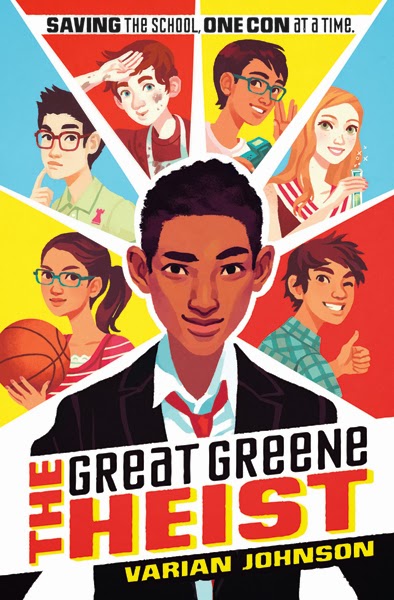
But at least they kept the same artist. Now it has more of a movie poster feel. Nothing wrong with that. As long as Jackson himself is front and center that is all I care. Good show, Scholastic. Way to knock it out of the park!
Other Blog Reviews:
Professional Reviews:
Misc:
- The book has become a bit of a touchstone for diversity discussions as of late. Thanks in large part to Kate Messner independent bookstores are all working to sell it in droves in what they’re calling The Great Greene Heist Challenge. Impressively, author John Green even offered ten signed copies of The Fault in Our Stars to any bookstore in the U.S. that handsells at least 100 copies of The Great Green Heist in its first month of publication. No small potatoes, that. I certainly hope lots and lots of people will be attempting to read and buy this one.
- Read the story behind the story here.
Video: As of this review there is no book trailer for this book. I hereby charge a middle school somewhere in this country to make an Ocean’s 11 style trailer out of it. Make it and I will post it, absolutely. For a guide, I direct you to this Muppet version of that very thing.
Okay. Now do that with this book.


By:
Betsy Bird,
on 3/20/2014
Blog:
A Fuse #8 Production
(
Login to Add to MyJacketFlap)
JacketFlap tags:
Neil Gaiman,
book lists,
Walter Dean Myers,
Ghostbusters,
multicultural children's literature,
Christopher Myers,
Fusenews,
diversity in children's literature,
E.B. White Read-Aloud Awards,
job opportunities,
Add a tag
Oh, what fun we shall have now that the weather is better. Here in New York spring sprang yesterday and all the New Yorkers, as one, exhaled in relief. We are perfectly aware that it can’t last (can anything?) but we’re enjoying it while we can. So sit back and glue your eyes to a computer screen instead of enjoying the respite. Unless you have outdoor wi-fi, of course. Then go wild.
 I don’t think I can go any further without bringing up the dual Myers pieces in the Times this past Sunday. As Walter Dean Myers says in his article Where Are the People of Color in Children’s Books?, “There is work to be done”. That may be so, and certainly we’re hardly at a reasonable level, but I’ve been very impressed by what I’ve seen in 2014. As I mentioned in an earlier post this year, I’m already seeing an uptick in the number of African-American kids not just in books but on the covers as well. Then I looked at Scholastic’s fall list and saw five different middle grade novels with black kids front and center. Five is nice, but that hardly means we’re out of the woods. Note that Walter Dean Myers wrote a somewhat similar piece for the Times in 1986 called I Actually Thought We Would Revolutionize the Industry (thanks to Debbie Reese for the heads up). In it he basically says that there were only 450 books on the black industry in the mid-80s. One shudders to think what the number is at this precise moment in time. Oh wait. According to the CCBC it’s 93. Now go read The Apartheid of Children’s Literature by Chris Myers and think upon that a bit.
I don’t think I can go any further without bringing up the dual Myers pieces in the Times this past Sunday. As Walter Dean Myers says in his article Where Are the People of Color in Children’s Books?, “There is work to be done”. That may be so, and certainly we’re hardly at a reasonable level, but I’ve been very impressed by what I’ve seen in 2014. As I mentioned in an earlier post this year, I’m already seeing an uptick in the number of African-American kids not just in books but on the covers as well. Then I looked at Scholastic’s fall list and saw five different middle grade novels with black kids front and center. Five is nice, but that hardly means we’re out of the woods. Note that Walter Dean Myers wrote a somewhat similar piece for the Times in 1986 called I Actually Thought We Would Revolutionize the Industry (thanks to Debbie Reese for the heads up). In it he basically says that there were only 450 books on the black industry in the mid-80s. One shudders to think what the number is at this precise moment in time. Oh wait. According to the CCBC it’s 93. Now go read The Apartheid of Children’s Literature by Chris Myers and think upon that a bit.
- I don’t like to pick favorites, but if I had to select my favorite blog post from the last few days, the vote would have to go wholeheartedly to the 100 Scope Notes piece The 33%: 2014 Books from Newbery Winners. The premise is simple. After doing the math Travis determined that a full 33% of Newbery winners go on to win again. He then goes the logical next step and collects all the middle grade novels out this year by previous winners. There was stuff I had no idea about in there (a new Christopher Paul Curtis?!?!). Required reading of the day then.
- New list time! So it would seem that the National Science Teachers Association has come up with their list called Outstanding Science Trade Books for Students K–12: 2014 (Books published in 2013). Not a common topic but a necessary one. I was happy to see a lot of favorites on there. Well done, winners! Now go ye, my pretties, and spread this info to every science teacher struggling with Common Core that you know. Thanks to Amie Wright for the link.
- Speaking of lists, the site List Challenges came up with their 50 Best Books for Kids. I was all set to pooh-pooh it when I saw they’d included Anna Hibiscus AND The Arrival. Shoot. They did their homework really well. I’ve read all but two (and it won’t be the two you think). How did you do?
- Meanwhile, it’s an interesting list and well worth looking at. They’ve released the contenders for the 2014 E.B. White Read-Aloud Award. Lots of good books there, but you probably know who I’ll be supporting. It’s a tough call but I’m Team Unicorn. Go team!
 This has absolutely nothing to do with anything else, aside from the fact that everyone’s clamoring for children’s books on WWI this year thanks to the 100 year anniversary. With that in mind, here’s a sense of what it would have looked like If WWI Was a Bar Fight. Or you can just do what I’m doing and wait for the latest Nathan Hale book Treaties, Trenches, Mud and Blood. Can’t wait to see that one!
This has absolutely nothing to do with anything else, aside from the fact that everyone’s clamoring for children’s books on WWI this year thanks to the 100 year anniversary. With that in mind, here’s a sense of what it would have looked like If WWI Was a Bar Fight. Or you can just do what I’m doing and wait for the latest Nathan Hale book Treaties, Trenches, Mud and Blood. Can’t wait to see that one!
Utterly fascinating piece in Arcade this week equating the changes happening at the main branch of NYPL with the movie Ghostbusters. It’s not as nutty as it sounds. Check out Para-Library Science at the NYPL if you don’t believe me.
- Then, to wash the academe from your gray cells, you can read eharmony’s 15 Reasons to Date a Librarian. It’s a rather optimistic view of our profession (while I would love to believe that we ALL have predictable hours . . .) but still cute. Thanks to Amie for the link.
- Man, that Marjorie Ingall’s one smart cookie. She watches that new Neil DeGrasse Tyson show Cosmos and what does she do? She comes up with a complimentary reading list for kids. That is how you DO IT, people!
If you haven’t seen this already then I’d like you to guess as to the identity of this children’s book author dressed up as his favorite children’s book character.

A hint: The character is Badger from The Wind in the Willows. And no. This isn’t Alice Cooper. *pictures what an Alice Cooper children’s book might consist of* The answer is here.


By:
Betsy Bird,
on 2/26/2014
Blog:
A Fuse #8 Production
(
Login to Add to MyJacketFlap)
JacketFlap tags:
Indigenous children's books,
Indigenous YA,
multicultural YA literature,
multicultural,
Native Americans,
Best Book Lists,
American Indians,
multicultural children's literature,
Top 100,
Add a tag
Everyone loves a good list but finding lists that reflect the intelligence of experts in a given field can sometimes be tricky. Consider, if you will, books about American Indians for the kiddos. I can’t tell you how many summer reading lists I see every year that have The Indian in the Cupboard, The Matchlock Gun, or even Rifles for Watie on them. Just once it would be nice to see a Top 100 list of books that could serve as guidelines for folks searching for good books about indigenous peoples.
You can imagine my interest, then, when Debbie Reese mentioned on the ccbc-net listserv that she had contributed to a list called “Top One Hundred Books by Indigenous Writers.” She also said that if anyone was interested in seeing this list, they could contact her and she’d pass it on. But with a list this good, it begs to be shared. I asked Debbie and her fellow experts in the field if it would be all right to post the list on this site and they agreed.
Here’s is some background, from Debbie, about the books:
As we worked on the list, we limited ourselves on # of books per author so that we could be as inclusive as possible. The list is a combination of our personal favorites and recommendations from peers.
We did not delineate or mark those that are in the children/YA category. We feel strongly that those who wish to write for adults or children/YA would benefit from reading what we’re calling masters. And, we think that those who wish to strengthen their ability to select/review books about American Indians would benefit from reading the books, too. So many authors who give talks and workshops tell people that in order to write, they have to read.
I have linked some of the children’s and YA titles to reviews and records. If I have missed any, please let me know.
Thank you Debbie, Susan, Teresa, and Tim for passing this along. I am very pleased and moved to host it here.
A Work in Progress: Top One Hundred Books by Indigenous Writers
Compiled for ATALM [1] 2012, by
Susan Hanks, Debbie Reese, Teresa Runnels, and Tim Tingle [2]
Updated on February 24, 2014
After a year of informal surveys and queries, we offer a list of over 100 books that every museum and library should have on their shelves. Written by tribal members, these books are the foundation of our literature as Indigenous people. Just as Western culture promotes Shakespeare as a prerequisite to grasping the essence of Western word arts, we promote N. Scott Momaday, D’Arcy McNickle, and many, many others to insure that our future writers reference, in images and ideas, our Indigenous masters.
Among our list are books written for children and young adults. Though often seen as “less than” because of their intended reader, we believe books for children are as important—if not more important—than books for adults. The future of our Nations will be in the hands of our children. Books that reflect them and their nations are crucial to the well being of all our Nations.
Sherman Alexie (Spokane/Coeur d’Alene)
- The Business of Fancydancing
- The Lone Ranger and Tonto Fistfight in Heaven
Rilla Askew (Choctaw)
Beverly Blacksheep (Navajo)
Kimberly Blaeser (White Earth Ojibwe)
- Absentee Indians and Other Poems
Joseph Boyden (Metis/Micmac)
Jim Bruchac and Joe Bruchac (Abenaki)
Joseph Bruchac (Abenaki)
Ignatia Broker (Ojibwe)
Emily Ivanoff Brown (Native Village of Unalakleet)
- The Longest Story Ever Told: Qayak, The Magical Man
Nicola Campbell (Interior Salish)
Confederated Salish and Kootenai Tribes
Robert Conley (Cherokee)
Ella Deloria (Yankton Sioux)
Vine Deloria, Jr. (Standing Rock Lakota)
- Custer Died For Your Sins
Jennifer Denetdale (Dine)
- The Long Walk: The Forced Navajo Exile
Echo-Hawk, Roger C. and Walter C. Echo-Hawk (Pawnee)
- Battlefields and Burial Grounds: The Indian Struggle to Protect Ancestral Graves in the United States
Walter C. Echo-Hawk (Pawnee)
- In the Courts of the Conqueror: the 10 Worst Law Cases Ever Decided
Heid Erdrich (Turtle Mountain Ojibwe)
- Cell Traffic: New and Selected Poems
Louise Erdrich (Turtle Mountain Ojibwe)
- The Last Report on the Miracles at No Horse
Jack D. Forbes (Powhatan Delaware)
- Only Approved Indians: Stories
- Africans and Native Americans: The Language of Race and the Evolution of Red-Black Peoples
Eric Gansworth (Onondaga)
- A Half-Life of Cardio-Pulmonary Function
Diane Glancy (Cherokee)
Joy Harjo (Muscogee Creek)
- Reinventing the Enemies Language
Tomson Highway (Cree)
- Dry Lips Oughta Move to Kapuskasing
Geary Hobson (Cherokee, Quapaw)
Linda Hogan (Chickasaw)
- Red Clay: Poems & Stories
- The Woman Who Watches Over the World: A Native Memoir
LeAnne Howe (Choctaw)
- Miko Kings: An Indian Baseball Story
Hershman John (Navajo)
- I Swallow Turquoise for Courage
Thomas King (Cherokee)
Michael Lacapa (Apache/Hopi)
- Less than Half, More Than Whole
Winona LaDuke (Ojibwe/Chippewa/Anishinabe)
- All Our Relations: Native Struggles for Land and Life
Adrian Louis (Paiute)
- Wild Indians and Other Creatures
Larry Loyie (Cree)
- As Long as the Rivers Flow: A Last Summer Before Residential School
Wilma Mankiller (Cherokee) and Michael Wallace
Joseph Marshall III (Lakota Sioux)
- The Journey of Crazy Horse
John Joseph Matthews (Osage)
Janet McAdams (Creek)
- After Removal (with Geary Hobson and Kathryn Walkiewicz)
- The Island of Lost Luggage
- The People Who Stayed: Southeastern Indian Writing
Joseph Medicine Crow (Crow)
Carla Messinger (Lenape)
N. Scott Momaday (Kiowa)
- The Way to Rainey Mountain
D’Arcy McNickle (Cree)
Nora Naranjo-Morse (Santa Clara Pueblo)
- Mud Woman: Poems from the Clay
Jim Northrup (Ojibwe)
Simon Ortiz (Acoma)
- The Good Rainbow Road/Rawa ‘Kashtyaa’tsi Hiyaani
- Men on the Moon: Collected Short Stories
- The People Shall Continue
Louis Owens (Choctaw)
- Mixedblood Messages: Literature, Film, Family, Place
- Other Destinies: Understanding the American Indian Novel
Leonard Peltier (Anishinabe/Lakota)
William Penn (Nez Perce/Osage)
- All My Sins Are Relatives
Susan Power (Sioux)
Marcie Rendon (Anishinabe)
Leslie Marmon Silko (Laguna Pueblo)
Cheryl Savageau (Abenaki)
Cynthia Leitich Smith (Muscogee Creek)
Paul Chaat Smith (Comanche)
- Everything You Know About Indians is Wrong
Virginia Driving Hawk Sneve (Lakota Sioux)
Allen J. Sockabasin (Passamaquoddy)
Shirley Sterling (Salish)
Chief Jake Swamp (Mohawk)
Luci Tapahonso (Dine)
- A Breeze Swept Through: Poetry
- Blue Horses Rush In: Poems and Stories
Drew Hayden Taylor (Curve Lake Ojibwe)
Tim Tingle (Choctaw)
Laura Tohe (Navajo)
Richard Van Camp (Dogrib)
- The Moon of Letting Go: and Other Stories
Jan Bourdeau Waboose (Ojibway)
Velma Wallis (Athabascan)
- Two Old Women: An Alaska Legend of Betrayal, Courage and Survival
Anna Lee Walters (Pawnee/Otoe)
James Welch (Blackfoot/Gros Ventre)
- Heartsong of Charging Elk
Bernelda Wheeler (Cree/Assiniboine/Saulteaux)
- I Can’t Have Bannock but the Beaver Has a Dam
- Where Did You Get Your Moccasins?
Robert A. Williams (Lumbee)
- Like a Loaded Weapon: The Rehnquist Court, Indian Rights, and the History of Racism in America
Daniel H. Wilson (Cherokee)
Craig Womack (Creek)
- Red On Red: Native American Literary Separatism
For further information and titles, contact Susan Hanks at [email protected], Debbie Reese at [email protected], Teresa Runnels at [email protected], or Tim Tingle at [email protected].
[1] The 2012 conference of the Association of Tribal Archives, Libraries, and Museums took place in Tulsa, Oklahoma. ATALM Website: http://www.atalm.org/
[2] This list was compiled for presentation at the ATALM conference. We encourage all librarians to purchase a copy of every book by the writers on our list, and we encourage you to ask when out-of-print books will be back in print. In preparing our list, we limited ourselves to no more than four titles per author. The titles are our personal favorites. Our contact info is below.

You know why I’m looking forward to 2014? It’s not the fresh start that comes with every turn of the globe. It’s not the incipient birth of my second child (I lie . . . it is that, but for the purposes of this piece we’re going to pretend that it’s not). It’s not the fact that I’ve mistakenly thought it was 2014 already for half the year (this is what early galleys hath wrought).
It’s none of these. It is, in fact, the plethora, the godsend, the sheer number of books with kids of color on the middle grade covers coming out in 2014.
None of you have been blind to the fact that when a middle grade novel stars a kid of color, there is a 75% chance that you’re not going to see their face on the book jacket. Heck, Allie Bruce’s posts on the subject are worth the price of admission alone. Then there’s the fact that sometimes even finding kids of color can be a challenge (see: 2013 Middle Grade Black Boys: Seriously, People?). With that in mind I’ve been watching the galleys for the 2014 season and I am feeling cautiously optimistic. While the books that I’m about to list here are still just a miniscule percentage of the swath of middle grade (by which I mean, novels for kids between the ages of 9-12) titles out there, they mark a 400% improvement over . . . um . . . ever. Here’s what I’m seeing for Spring 2014 alone:
A Medal for Leroy by Michael Morpurgo
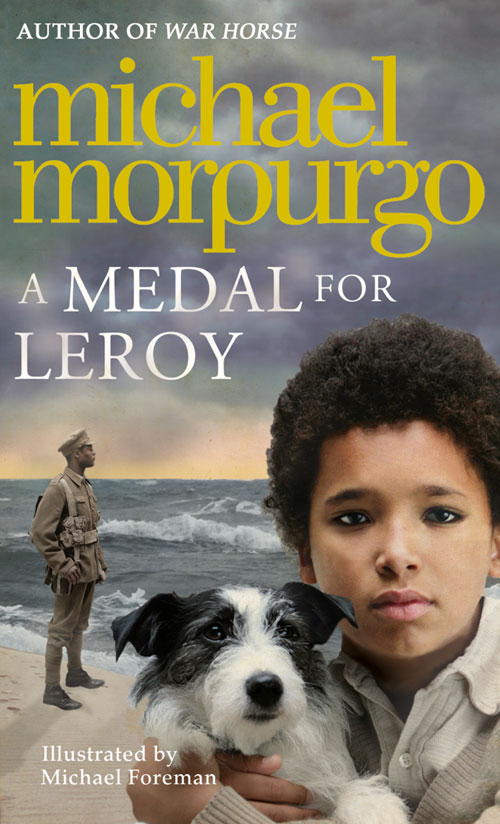
Nicely done. Big full-face with the dad in the background. Makes it clear it’s historical without feeling off-putting. Of course the cover originated in Britain, but we’ll take what we can get.
Eddie Red Undercover: Mystery on Museum Mile by Marcia Wells

The first in what appears to be a series, this is a SUPER rarity. Dark-skinned boy (who is NOT a sidekick or best friend) alone on the cover of a book that actually looks fun and not meaningful or historical. And a mystery at that? Somebody buy me a lottery ticket quick, because I think my luck’s about to change!
The Blossoming Universe of Violet Diamond by Branda Woods
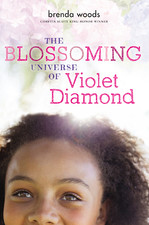
I don’t care that it’s just half a face. It’s still a nice cover and I’m all for it.
Saving Baby Doe by Danette Vigilante
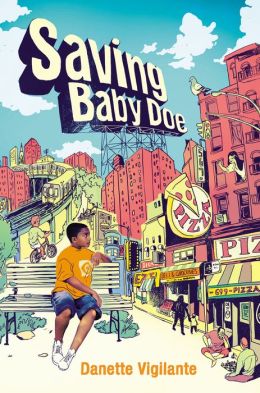
Contemporary Latino boy?! This is also wildly uncommon. Kind of dig the gorgeous cover design as well.
The Crossover by Kwame Alexander
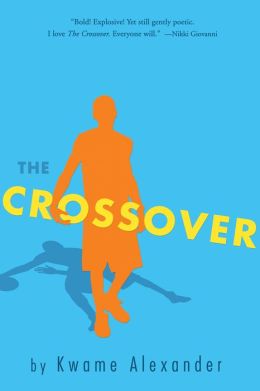
What, you thought we got rid of all the silhouette-stand-ins-for-black-kids covers? Think again.
The Lion Who Stole My Arm by Nicola Davies
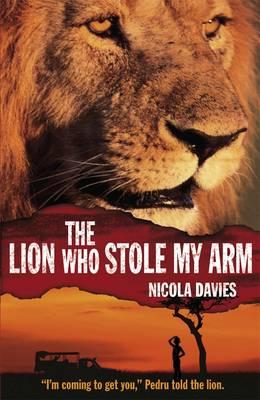
Another silhouette, but at least the title and cover blurb (which may or may not be on the American edition) are awesome.
Susan Marcus Bends the Rules by Jane Cutler
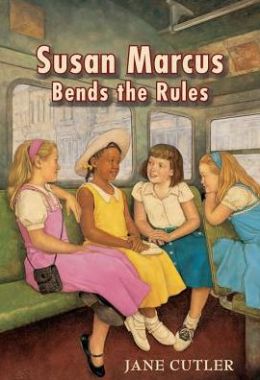
Look at this cover long enough and you might be convinced that the “Susan Marcus” mentioned in the title was the African-American girl at the center of the other girls’ attention. Nope. That girl isn’t even our heroine. A bit misleading but I sort of like the image so I’m torn.
Winter Sky by Patricia Reilly Giff
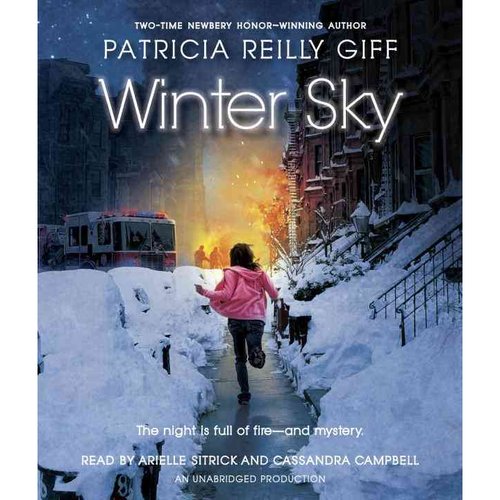
A close kin to the silhouette cover is the back-of-the-head cover where, again, you cannot determine the character’s race. That said, I actually like this one. Look at her head and hands and her race is instantly apparent (it’s a little harder to see here but trust me that when you see the actual book it will be clear). And due to the fact that there are 5 billion YA novels with white girls running away from the viewer, nothing wrong with a middle grade novel doing it’s own similar thing.
Painting the Rainbow by Amy Gordon

Like the “Susan Marcus” book, the boy pictured here is not the hero of the tale but someone being investigated (so to speak) by the two girls in the boat. This is, by the way, the only book with an Asian or Asian-American character I’ve seen with the sole exception of . . .
Secrets of the Terra-Cotta Soldier Ying Chang Compestine and Vinson Compestine
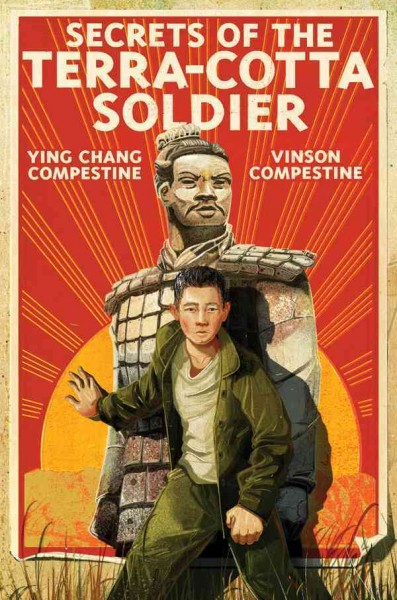
It’s historical (a rare fantasy set in Maoist China) and distinctly unique.
Almost Super by Marion Jensen
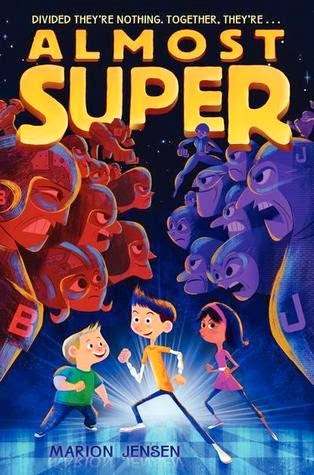
Maybe she’s not the heroine proper but the character of Juanita Johnson fills me with hope. She and Gum Girl should get together sometime and save the world.
Nightingale’s Nest by Nikki Loftin

Winner of the Most Blurbs for a Galley award of 2014.
Zane and the Hurricane: A Story of Hurricane Katrina by Rodman Philbrick
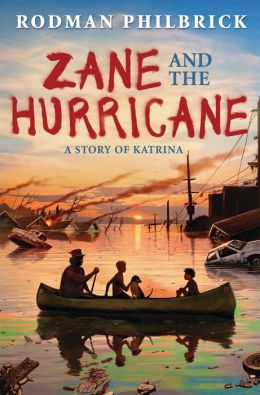
There is an understanding these days that you cannot CANNOT write a middle grade novel about Hurricane Katrina without the book being about a dog in some way. This title is no exception. It does, at first, look like a series of silhouettes but if you look at the actual book you’ll see it’s more detailed than that. I’m giving it points too for just looking like a book a kid might actually want to read.
Conclusions? As I mentioned before, Asian characters are more difficult than usual to find this publishing season. I was tempted to include The Dirt Diary by Anna Staiszewski in that rare category but I haven’t read the book so I wasn’t certain that I was correct. I’ve also not seen any books about Native American kids, but unless you’re Joseph Bruchac or Louise Erdrich they won’t be putting your face on the cover anyway (Written in Stone was 2013′s rare exception).
I would also be amiss in not mentioning the fact that these are just books that are featuring kids of color on their book jackets. I’m not mentioning the books that feature multicultural kids within the pages (just not on the covers). These would include titles like Upside Down in the Middle of Nowhere by Julie T. Lamana and The Sittin’ Up by Sheila P. Moses amongst many others. Books that I am incredibly grateful for, but feel like the publishers missed a golden opportunity somewhere down the road when it came to their covers. Ah well. There’s always next year.
By the way, I just know that since I’m listing this books from the galleys I’ve received that there are bound to be some covers I’ve missed. So lay ‘em on me! What’s also out there that I’m failing to note?


By:
Aline Pereira,
on 12/6/2012
Blog:
PaperTigers
(
Login to Add to MyJacketFlap)
JacketFlap tags:
Eventful World,
The New York Times,
multicultural children's literature,
multicultural children's books,
Cultures and Countries,
an Image is Missing,
Books to Match Diverse Young Readers,
For Young Latino Readers,
minorities in children's literature,
Add a tag
Two must read articles recently published in the The New York Times: For Young Latino Readers, an Image Is Missing and Books to Match Diverse Young Readers. “Students of other races and ethnicities seldom encounter characters like themselves in books, and some education experts say that can be an obstacle to literacy.” Read what teachers, students, parents and literacy advocates have to say about this and then use The New York Times interactive page to click on book titles that feature main characters who are black, Latino, Asian, American Indian or Alaska Native and read the beginning of each book.
Earlier this year the Children’s Book Council (located in the USA) launched the CBC Diversity Committee in order to:
increase the diversity of voices and experiences contributing to children’s literature. To create this change,  the Committee strives to build awareness that the nature of our society must be represented within the children’s publishing industry.
the Committee strives to build awareness that the nature of our society must be represented within the children’s publishing industry.
We endeavor to encourage diversity of race, gender, geographical origin, sexual orientation, and class among both the creators of and the topics addressed by children’s literature. We strive for a more diverse range of employees working within the industry, of authors and illustrators creating inspiring content, and of characters depicted in children’s literature.
Click here to visit the CBC Diversity Committee Blog and here to access their Resources page which contains information put together by the Committee for anyone interested in producing, promoting, buying, or writing diverse books for children.
Click here to read John A. Sellers’ recent Publisher Weekly article CBC Diversity Committee: Starting Conversations and Building a Following.

By:
Betsy Bird,
on 8/25/2011
Blog:
A Fuse #8 Production
(
Login to Add to MyJacketFlap)
JacketFlap tags:
Uncategorized,
slavery,
Patricia McKissack,
multicultural children's literature,
multicultural picture books,
folktale review,
folk and fairy tale reviews,
picture book folktales,
2011 picture books,
2011 reviews,
Best Books of 2011,
2012 Caldecott contender,
Diane Dillon,
Leo Dillon,
Schwartz & Wade,
2011 folktales,
Add a tag
 Never Forgotten
Never Forgotten
By Patricia C. McKissack
Illustrated by Leon and Diane Dillon
Schwartz & Wade
$18.99
ISBN: 978-0-375-84384-6
Ages 4 and up
On shelves October 11, 2011
The more I read children’s literature the more I come to realize that my favorite books for kids are the ones that can take disparate facts, elements, and stories and then weave them together into a perfect whole. That someone like Brian Selznick can link automatons and the films of Georges Melies in The Invention of Hugo Cabret or Kate Milford can spin a story from the history of bicycles and the Jake Leg Scandal in The Boneshaker thrills me. Usually such authors reserve their talents for chapter books. There they’ve room to expound at length. And Patricia McKissack is no stranger to such works of fiction. Indeed some of her chapter books are the best in a given library collection (I’ve a personal love of her Porch Lies). But for Never Forgotten Ms. McKissack took tales of Mende blacksmiths and Caribbean legends of hurricanes and combined them into a picture book. Not just any picture book, mind you, but one that seeks to answer a question that I’ve never heard adequately answered in any books for kids: When Africans were kidnapped by the slave trade and sent across the sea, how did the people left behind react? The answer comes in this original folktale. Accompanied by the drop dead gorgeous art of Leo & Diane Dillon, the book serves to remind and heal all at once. The fact that it’s beautiful to both eye and ear doesn’t hurt matters much either.
When the great Mende blacksmith Dinga found himself with a baby boy after his wife died he bucked tradition and insisted on raising the boy himself. For Musafa, his son, Dinga called upon the Mother Elements of Earth, Fire, Water and Wind and had them bless the child. Musafa grew in time but spent his blacksmithing on creating small creatures from metal. Then, one day, Dinga discovers that Musafa has been kidnapped by slave traders in the area. Incensed, each of the four elements attempts to help Dinga get Musafa back, but in vain. Finally, Wind manages to travel across the sea. There she finds Musafa has found a way to make use of his talent with metal, creating gates in a forge like no one else’s. And Dinga, back at home, is comforted by her tale that his son is alive and, for all intents and purposes, well.
 McKissack’s desire to give voice to the millions of parents and families that mourned the kidnapping of their children ends her book on a bittersweet note. After reading about Musafa’s disappearance and eventual life, the book finishes with this: “Remember the wisdom of Mother Dongi: / ‘Kings may come and go, / But the fam
McKissack’s desire to give voice to the millions of parents and families that mourned the kidnapping of their children ends her book on a bittersweet note. After reading about Musafa’s disappearance and eventual life, the book finishes with this: “Remember the wisdom of Mother Dongi: / ‘Kings may come and go, / But the fam

By:
Betsy Bird,
on 8/19/2011
Blog:
A Fuse #8 Production
(
Login to Add to MyJacketFlap)
JacketFlap tags:
2011 early chapter books,
Uncategorized,
Africa,
Kane/Miller,
multicultural children's literature,
early chapter books,
Atinuke,
2011 reviews,
Best Books of 2011,
British imports,
Add a tag
 The No. 1 Car Spotter
The No. 1 Car Spotter
By Atinuke
Illustrated by Warwick Johnson Cadwell
Kane/Miller (a division of EDC Publishing)
$5.99
ISBN: 978-1-61067-051-7
Ages 7-11
On shelves September 1st.
When I discovered the amazing, remarkable, one-of-a-kind, never before seen Anna Hibiscus books by Atinuke last year I thought I’d died and gone to heaven. It just didn’t seem possible. A contemporary early chapter book set on the continent of Africa? To understand how rare this was visit your local library sometime. Ask for fiction about Africa that takes place today for early readers. Specify that you’d rather not take out a work of older fiction that’s deadly serious, but rather something light and fun. And while you’re at it, why don’t you ask for the moon as well since you’re just as likely to get that as what I’ve just described unless it’s Anna Hibiscus (in America anyway). Now Anna is joined by yet another Atinuke character. No. 1 lives in a rural village with his family and friends and his stories, like those of Anna Hibiscus, linger in your brain long after you’ve read them.
Meet No. 1. He’s what you might call a car spotter. If there’s a car driving past his village, you can be sure he’ll not only spot it but identify it and long before anyone else. Life in No. 1’s village isn’t easy, of course. If a cart breaks down then everyone’s got to figure out how to get the produce to the market (it’s No. 1 who comes up with a brilliant solution). If a woman wants to get lipstick at the market she sometimes will have to send a boy (No. 1 ends up doing the right thing entirely by accident then too). If people need chores done they have to rely on the kids (a problem when No. 1 wants to only help the auntie who makes the best food). And if someone gets seriously sick… well, sometimes it’s not always No. 1 who comes up with the solutions to problems. But he’s always around to help out.
 I adore Atinuke’s ear for language. This book just begs to be read aloud as you go through it. Pitch perfect bedtime reading fare, that’s what you have here. You get such magnificent lines out of it too. For example, there’s the section where No. 1 aids a single particular mama in the hopes of getting some of her delicious akara. At one point the author just writes, “As I was an able-bodied boy in the vicinity of a shouting mama I started to run around as well.” Something about the construction of that sentence just pleases me to no end. Later No. 1 explains to Coca-Cola that he can’t risk helping him out anymore because he might end up with a name like 7Up. Coca-Cola, visibly upset, points out that his own nickname is from a soft drink. I love No. 1’s method of comforting his friend. “That… is because Coca-Cola is the number one soft drink. Some people prefer Fanta. It is true. And some people prefer Sprite. Some people don’t touch Coca-Cola. But Coca-Cola is still number one.” As pep talks go, I’ve never heard on
I adore Atinuke’s ear for language. This book just begs to be read aloud as you go through it. Pitch perfect bedtime reading fare, that’s what you have here. You get such magnificent lines out of it too. For example, there’s the section where No. 1 aids a single particular mama in the hopes of getting some of her delicious akara. At one point the author just writes, “As I was an able-bodied boy in the vicinity of a shouting mama I started to run around as well.” Something about the construction of that sentence just pleases me to no end. Later No. 1 explains to Coca-Cola that he can’t risk helping him out anymore because he might end up with a name like 7Up. Coca-Cola, visibly upset, points out that his own nickname is from a soft drink. I love No. 1’s method of comforting his friend. “That… is because Coca-Cola is the number one soft drink. Some people prefer Fanta. It is true. And some people prefer Sprite. Some people don’t touch Coca-Cola. But Coca-Cola is still number one.” As pep talks go, I’ve never heard on
I’ve just arrived in Singapore to take part in the upcoming Asian Festival of Children’s Content and thought I would post a few pictures taken during my first afternoon in the city. I’ve only been here a few hours and to say I’m impressed would be an understatement. Singapore is amazing! The weather is beautiful, the people so friendly and the city itself is stunning: modern highrises mixed with colonial buildings, multicultural enclaves such as Chinatown and Little India, all surrounded by immaculate parks and tropical greenery.
The first two photos were taken at Vancouver International Airport and show the First Nations artwork which is highlighted throughout the terminal, then it’s on to Singapore. Enjoy!







Now the jet lag is catching up to me and it’s time to get to sleep. The festival starts on May 25th so I will have some time tomorrow to get to discover Singapore a bit more…

By:
Betsy Bird,
on 1/20/2011
Blog:
A Fuse #8 Production
(
Login to Add to MyJacketFlap)
JacketFlap tags:
Afghanistan,
multicultural children's literature,
middle grade realistic fiction,
multicultural middle grade,
Trent Reedy,
2011 reviews,
2011 middle grade fiction,
Uncategorized,
middle grade fiction,
Add a tag
 Words in the Dust
Words in the Dust
By Trend Reedy
Arthur A. Levine Books (an imprint of Scholastic)
$17.99
ISBN: 978-0-545-26125-8
Ages 11 and up.
On shelves now.
A children’s book, written by a soldier about an Afghani girl, set in the recent past. That’s a toughie. There are a lot of easier books out there to review too. Why aren’t I writing one about the adorable little girl who wants to be Little Miss Apple Pie or the one about the cute dog that wants to find its home? Well, sometimes you have to step out of your comfort zone, which I suspect is what author Trent Reedy wanted to do here. With an Introduction by Katherine Paterson and enough backmatter to sink a small dinghy, Reedy takes a chance on confronting the state of the people of Afghanistan without coming off as imperialist, judgmental, or a know-it-all. For the most part he succeeds, and the result is a book that carries a lot more complexity in its 272 pages than the first 120 or so would initially suggest. Bear with it then. There’s a lot to chew on here.
Zulaikha would stand out in any crowd. It’s not her fault, but born with jutting teeth and a cleft upper lip she finds herself on the receiving end of the taunts of the local boys, and sometimes even her own little brother. Then everything in her life seems to happen at once. She’s spotted by an American soldier, who with his fellows manages to convince their captain to have Zulaikha flown to a hospital for free surgery. At the same time she makes the acquaintance of a friend of her dead mother, a former professor who begins to teach her girl how to read. Top it all off with the upcoming surprise marriage of Zeynab, Zulaikha’s older sister, and things seem to be going well. Unfortunately, hopes have a way of becoming dashed, and in the midst of all this is a girl who must determine what it is she wants and what it is the people she cares about need.
I approach most realistic children’s fiction with a great deal of trepidation, particularly when it discusses topical information. The sad truth of children’s books is that they are perfect containers for didacticism, even if you did not mean for that to be the case when you begin. With that in mind I read the first 120 pages of the story warily. I wasn’t certain that I liked what I saw either. Seemed to me that this book was indeed showing an in-depth portrait of Afghanistan, beauty, warts, and all, while the Americans were these near saviors, picking a poor girl out of the crowd upon whom to bestow free surgery out of the goodness of their golden glorious hearts. Fortunately, by the time we got to page 120 we saw the flip side of the equation. Yes, the Americans are perky and western and what have you. They’re also doofuses. Sometimes. They sort of blunder about Afghanistan without any recognition of the cultural courtesies they’re supposed to engage in. They merrily serve their Muslim guests food made out of pigs, unaware of what they’re doing. At one point Zulaikha’s father grows increasingly angry with them for their distrust of common Afghan workers (watching builders at gunpoint so that none of them steal tools) as well as their conversational blunders. Don’t get me wrong. The Americans are generally seen as good blokes. But I was worried that this book was going to be one sweet love song to the American invasion, and it’s not that. It’s nuanced and folks are allowed to be both good and bad. Even the ones writing the book.
I still got nervous, though. I desperately did not want this
The Thailand Reading Association recently held a two day conference entitled “Reading Literacy for Quality Education”. One of the organizers, Tuk, has just informed me that photos and information from the conference (including downloadable speeches and reports) are available here on the Thailand Reading Association’s website and also here on Tuk’s blog.

By:
Aline Pereira,
on 10/5/2009
Blog:
PaperTigers
(
Login to Add to MyJacketFlap)
JacketFlap tags:
India,
Eventful World,
multicultural children's literature,
multicultural literacy events,
children's literature India,
International Pushkar Fair,
Literature festival India,
Pushkar Literature Festival,
Siyahi,
Voices from the North East,
Add a tag
On October 13th and 14th, Siyahi, India’s leading literary agency, and India Habitat Centre are presenting Voices from the North East, a focused literary meet on the stories, tales and folk narratives of North East India. The event will take place at India Habitat Centre in New Delhi.
 The verdant Seven Sister States from the North East of India have a unique indigenous culture where myths, oral traditions, legends and folklore are commonplace and yet unique. Voices from the North East will take into account the quantum of diversity in art and culture in this region which is evident from the multitude of languages and ethnic groups. It will deal with the art of storytelling in context to the development of North Eastern culture and civilization. Authors, poets, storytellers and performers will engage audiences in a cultural dialogue and help them to understand the North Eastern literature in all its myriad forms and dimensions.
The verdant Seven Sister States from the North East of India have a unique indigenous culture where myths, oral traditions, legends and folklore are commonplace and yet unique. Voices from the North East will take into account the quantum of diversity in art and culture in this region which is evident from the multitude of languages and ethnic groups. It will deal with the art of storytelling in context to the development of North Eastern culture and civilization. Authors, poets, storytellers and performers will engage audiences in a cultural dialogue and help them to understand the North Eastern literature in all its myriad forms and dimensions.
Siyahi is also hosting the Pushkar Literature Festival on October 31st during the International Pushkar Fair. For one day, writers, poets, book lovers, publishers, performers and storytellers will be brought together to add to the mesmerizing riot of colours, textures, hues and flavours that come alive during the International Pushkar Fair. This literary event will help explore and discover the meeting points between contemporary literature and folklore, oral traditions, legends, myths and languages, which precisely define the spirit of Pushkar.
For up-to-date information about these events including detailed programmes and photos, visit Siyahi’s Facebook page.

By:
Aline Pereira,
on 9/8/2009
Blog:
PaperTigers
(
Login to Add to MyJacketFlap)
JacketFlap tags:
Eventful World,
multicultural book events,
multicultural children's literature,
MOCHA,
Museum of Children's Art,
Anjana Utarid,
children's literature India,
linking literacy with art-making,
Roti Rolled Away,
Add a tag

For over 20 years the Museum of Children’s Art (MOCHA) located in Oakland, California has been providing hands-on learning experiences for children and adults in 5 program areas: Museum Programs, Artists in the Schools, Early Childhood Programs, Professional Development Programs, and Community Programs. As well as advocating for arts as an essential part of a strong, vital and diverse community, MOCHA emphasizes outreach to children in low-income communities that do not typically have wide access to the arts; and works towards their mission of ensuring that the arts are a fundamental part of the lives of all children. Last year over 35,000 children took part in MOCHA programs!
The first Saturday of each month, MOCHA links literacy with art-making in a free event known as Saturday Stories. First, a children’s book is read aloud and then participants engage in an art activity that highlights the themes of the book. On Saturday 12 September, from 1 - 2pm, MOCHA visitors are invited to join author Anjana Utarid. She will be reading her picture book Roti Rolled Away (Virtualbookworm.com Publishing, 2007): the story of Asha, a young girl in India who encounters unique and exotic animals as she chases down a runaway bread roti.
aloud and then participants engage in an art activity that highlights the themes of the book. On Saturday 12 September, from 1 - 2pm, MOCHA visitors are invited to join author Anjana Utarid. She will be reading her picture book Roti Rolled Away (Virtualbookworm.com Publishing, 2007): the story of Asha, a young girl in India who encounters unique and exotic animals as she chases down a runaway bread roti.
Anjana, who has an MA in Counseling Education, has traveled around the world several times and is an active advocate for at-risk children. Roti Rolled Away was her first children’s book and was derived from watching her mother teach her daughter to make rotis. Teri Sloat reviewed the book and says:
Roti Rolled Away allows us to follow the Roti, instead of the Gingerbread Man, as it rolls away from Asha. Anjana Utarid uses a familiar pattern and wonderfully rhythmic writing as Asha pays her respects to the animals of India while following the Roti through the jungle, only to watch the Roti disappear into the river. A wonderful grandmother story and bridge between cultures.
 If you’re in Evansville, Indiana on July 25th, come out and meet Kristi Valiant, illustrator of Cora Cooks Pancit! She’ll be autographing books at Barnes & Noble (624 South Green River Rd) at 2:00pm. Kristi says she’ll be bringing her red apron and some pancit for everyone to taste.
If you’re in Evansville, Indiana on July 25th, come out and meet Kristi Valiant, illustrator of Cora Cooks Pancit! She’ll be autographing books at Barnes & Noble (624 South Green River Rd) at 2:00pm. Kristi says she’ll be bringing her red apron and some pancit for everyone to taste.
Cora Cooks Pancit! is a lovely story about a Filipino girl who cooks her favorite noodle dish with her mother. However author Dorina Lazo Gilmore notes that it is not just about cooking pancit and neither is it a book just for the Filipino audience. “It is about celebrating the family. It is about cooking with your parents.”
Here’s a review of the book from publisher Shen’s Books:
Cora Cooks Pancit! tells the story of Cora who loves being in the kitchen, but always gets stuck doing the kid jobs like licking the spoon. One day, however, when her older sisters and brother head out, Cora finally gets the chance to be Mama’s assistant chef. And of all the delicious Filipino dishes that dance through Cora’s head, she and Mama decide to make pancit, her favorite noodle dish.
With Mama’s help, Cora does the grown-up jobs like shredding the chicken and soaking the noodles (perhaps Mama won’t notice if she takes a nibble of chicken or sloshes a little water on the floor). Cora even gets to stir the noodles in the pot—carefully– while Mama supervises. When dinner is finally served, her siblings find out that Cora did all their grown-up tasks, and Cora waits anxiously to see what everyone thinks of her cooking.
Dorina Lazo Gilmore’s text delightfully captures the warmth between mother and daughter as they share a piece of their Filipino heritage. With bright and charming illustrations by Kristi Valiant, Cora’s family comes alive as Cora herself becomes the family’s newest little chef.
To read a great interview with author Dorina Lazo Gilmore, visit Tarie’s blog Into the Wardrobe.
 Lucía González, renowned storyteller, puppeteer, and Pura Belpré Honor author, will be doing a presentation at the Hedberg Public Library, 316 S. Main Street, Janesville, WI, on Saturday, July 18, at 1:00 p.m. Everyone is invited to attend.
Lucía González, renowned storyteller, puppeteer, and Pura Belpré Honor author, will be doing a presentation at the Hedberg Public Library, 316 S. Main Street, Janesville, WI, on Saturday, July 18, at 1:00 p.m. Everyone is invited to attend.
 Well, we knew it would be a success and it was! Check out Grace Lin’s blog to read and see photos of her recent book launch party for Where the Mountain Meets the Moon. Congratulations, Grace!
Well, we knew it would be a success and it was! Check out Grace Lin’s blog to read and see photos of her recent book launch party for Where the Mountain Meets the Moon. Congratulations, Grace!
Also, be sure to check out Grace’s charity project, Small Graces: A Painting a Month for the FCB. Each month this year, she is auctioning off a piece of her artwork to benefit the Foundation of Children’s Books, a small, non-profit organization in Boston that makes a big difference in the lives of young readers by bringing children’s book authors and illustrators into under-served schools in Boston for visits and residencies. This month’s auction takes place June 15th - 19th and features a lovely original painting by Grace depicting the Chinese proverb “Flowers leave their fragrance on the hand that gives them”.
 Congratulations and best wishes to award-winning author and illustrator Grace Lin on the upcoming launch of her newest novel Where the Mountain Meets the Moon. The launch takes place today, Saturday, June 6th at 5:30 pm at the Porter Square Bookstore in Cambridge, MA. Grace will be there reading and signing her books as well as giving away some very unique goodie bags! Amongst other things, each bag will contain a homemade, boxed cupcake and one of these cupcakes will have a coin baked inside it. Grace says that the person who has the cupcake with the coin in it will win their name or likeness in an upcoming book. How exciting is that!
Congratulations and best wishes to award-winning author and illustrator Grace Lin on the upcoming launch of her newest novel Where the Mountain Meets the Moon. The launch takes place today, Saturday, June 6th at 5:30 pm at the Porter Square Bookstore in Cambridge, MA. Grace will be there reading and signing her books as well as giving away some very unique goodie bags! Amongst other things, each bag will contain a homemade, boxed cupcake and one of these cupcakes will have a coin baked inside it. Grace says that the person who has the cupcake with the coin in it will win their name or likeness in an upcoming book. How exciting is that!
Where the Mountain Meets the Moon is a Chinese folktale-inspired fantasy novel geared towards kids in Grades 3 -6 and is being printed in full color, which is very unusual for a novel. An overview of the book states:
In the valley of Fruitless mountain, a young girl named Minli lives in a ramshackle hut with her parents. In the evenings, her father regales her with old folktales of the Jade Dragon and the Old Man of the Moon, who knows the answers to all of life’s questions. Inspired by these stories, Minli sets off on an extraordinary journey to find the Old Man of the Moon to ask him how she can change her family’s fortune. She encounters an assorted cast of characters and magical creatures along the way, including a dragon who accompanies her on her quest for the ultimate answer.
parents. In the evenings, her father regales her with old folktales of the Jade Dragon and the Old Man of the Moon, who knows the answers to all of life’s questions. Inspired by these stories, Minli sets off on an extraordinary journey to find the Old Man of the Moon to ask him how she can change her family’s fortune. She encounters an assorted cast of characters and magical creatures along the way, including a dragon who accompanies her on her quest for the ultimate answer.
This is a wonderous novel with an epic journey and memorable characters in the tradition of The Wizard of Oz. From the beautiful design and the breathtaking full-color illustrations throughout, to the gentle humor and touching prose, this book is truly a gem.
To get a sneak preview of Where the Mountain Meets the Moon, click here. Check out Grace’s blog to read about her book launch preparations!
(Author photo taken by: Alexandre Ferron)

By:
Aline Pereira,
on 3/1/2009
Blog:
PaperTigers
(
Login to Add to MyJacketFlap)
JacketFlap tags:
Astrid Lindgren Award,
literary festivals,
Calendar of Events,
Margaret Mahy,
Bologna Children's Book Fair,
Latino Book and Family Festival,
Children's book events,
multicultural children's literature,
Children's literature festivals,
Noma Concours,
Reading the World conference,
Add a tag
(Click on event name for more information)
The Art of Picture Books Exhibition~ ongoing until Mar 27, Bristol, United Kingdom
20th Annual Children’s Book Illustrator Exhibit~ ongoing until Apr 18, Hayward, CA, USA
Read Across America Day~ Mar 2, USA
Words on Wheels~ Mar 2 - 7, New Zealand
Papirolas Festival for Children and Youth~ Mar 3 - 8, Guadalaraja, Mexico
World Book Day~ Mar 5, United Kingdom and Ireland
Growing Up Asian in America Art and Essay Contest~ entry deadline Mar 5, San Francisco, CA, USA
40th Annual Conference on Children’s Literature~ Mar 6 - 7, Athens, GA, USA
Asilomar Regional Reading Conference: Fired Up for Literacy~ Mar 6 - 8, Pacific Grove, CA, USA
Shanghai International Literary Festival~ Mar 6 -22, Shanghai, China
Cooperative Children’s Book Center (CCBC)Choices Day and Charlotte Zolotow Award Event~ Mar 7, Madison, WI, USA
Man Hong Kong International Literary Festival~ Mar 8 - 18, Hong Kong
ALA’s Teen Tech Week~ Mar 8 - 14, USA
Share a Story - Shape a Future, A Blog Tour for Literacy~ Mar 9
12th Time of the Writer International Writers Festival~ Mar 9 – 14, Durban, South Africa
Rhinelander Children’s Book Fest~ Mar 10 -11, Rhinelander, WI, USA
Annual SCBWI (SA) Publishers Show & Tell Day~ Mar 11, Cape Town, South Africa
19th Abu Dhabi International Book Fair~ Mar 12 - 22, Abu Dhabi, United Arab Emirates
Children’s Books in Asia, Africa and Latin America Symposium~ Mar 13, Tokyo, Japan
13th Annual Charlotte S. Huck Children’s Literature Festival~ Mar 13 - 14, Redlands, CA, USA
Salon du Livre Paris~ Mar 13 - 18, Paris, France
41st Annual Children’s Literature Festival~ Mar 15 - 17, Warrensburg, MO, USA
Exhibition of Prize Winning Works of 16th Noma Concours (2008) “Palette of Dream Colours IV”~ Mar 15 - Jul 5, Tokyo, Japan
Somerset Celebration of Literature~ Mar 16 - 20, Mudgeeraba, Australia
World Storytelling Day~ Mar 20
Harmony Day~ Mar 21, Australia
World Poetry Day~ Mar 21
Bologna Children’s Book Fair~ Mar 23 - 26, Bologna, Italy
Astrid Lindgren Memorial Award Winners Announced~ Mar 24, Vimmerby, Sweden
All-Saints College Festival of Young Adult and Children’s Literature~ Mar 25 - 27, Bull Creek, Australia
7th Bangkok International Book Fair & 37th National Book Fair~ Mar 26 - Apr 6, Bangkok, Thailand
Oxford Children’s Literature and Youth Culture Colloquium Presents an International Conference: Place and Space in Children’s Literature~ Mar 27 - 28, Oxford, United Kingdom
Children’s Literature Council Spring Workshop: I Can Read It by Myself…But Do I Want To? Inspiring Emergent Readers~ Mar 28, Glendale, CA, USA
Margaret Mahy Day~ Mar 28, New Zealand
Reading the World: A Conference Celebrating Multicultural Literature for Children and Young Adults~ Mar 28 - 29, San Francisco, CA, USA
Childhood in its Time Conference: The Child in British Literature~ Mar 28 - 29, Canterbury, United Kingdom
Latino Book & Family Festival~ Mar 28 - 29, Chicago, IL, USA

By:
Aline Pereira,
on 10/3/2008
Blog:
PaperTigers
(
Login to Add to MyJacketFlap)
JacketFlap tags:
Authors,
Yuyi Morales,
Pat Mora,
Eventful World,
Illustrators,
Laura Resau,
Latino Book Awards,
Rafael Lopez,
Hispanic Heritage Month,
Jorge Argueta,
2008 Américas Award,
Carmen T. Bernier,
hispanic children's books,
latino children's books,
multicultural children's literature,
Children's Books,
Add a tag
 If you’ve had a chance to savor Yum! Mmm! Que Rico! America’s Sproutings, or any of the books in this year’s Américas Award list of winners, honor books and commended titles, you will understand how spot-on this award’s committee is in recognizing and honoring accurate portrayals of our Americas’ rich cultural heritage.
If you’ve had a chance to savor Yum! Mmm! Que Rico! America’s Sproutings, or any of the books in this year’s Américas Award list of winners, honor books and commended titles, you will understand how spot-on this award’s committee is in recognizing and honoring accurate portrayals of our Americas’ rich cultural heritage.
As this year’s winners, Pat Mora and Rafael Lopez’s Yum! Mmm! Que Rico! and Laura Resau’s Red Glass will be honored tomorrow (Oct 4), at a ceremony at the Library of Congress, in Washington D.C. Hosted by the Library of Congress’s Hispanic Division and the Center for the Book, the event is free and open to the public, so don’t miss it if you are in the area!
Yuyi Morales’ Little Night, Jorge Argueta’s Alfredito Flies Home and Carmen T. Bernier’s Frida: Viva la Vida! are among the honored and commended titles selected by the award’s 2008 committee.
What better way to celebrate Hispanic Heritage Month than by giving these books the recognition and readership they deserve?
 Freedom Over Me: Eleven slaves, their lives and dreams brought to life
Freedom Over Me: Eleven slaves, their lives and dreams brought to life I have often said, and I say it to this day, that if there were ever a Church of Ashley Bryan, every last person who has ever met him or heard him speak would be a member. There are only a few people on this great green Earth that radiant actual uncut goodness right through their very pores. Mr. Bryan is one of those few, so when I asked at the beginning of this review what the credentials are for giving voice to the voiceless, check off that box. There are other reasons to trust him, though. A project of this sort requires a certain level of respect for the deceased. To attain that, and this may seem obvious, the author has to care. Read enough books written for kids and you get a very clear sense of those books written by folks who do not care vs. folks that do. Even then, caring’s not really enough. The writing needs to be up to speed and the art needs to be on board. And for this particular project, Ashley Bryan had a stiffer task at hand. Okay. You’ve given them full names and backgrounds and histories. What else do they need? Bryan gives these people something intangible. He gives them dreams. It’s right there in the subtitle, actually: “Eleven slaves, their lives and dreams brought to life.”
I have often said, and I say it to this day, that if there were ever a Church of Ashley Bryan, every last person who has ever met him or heard him speak would be a member. There are only a few people on this great green Earth that radiant actual uncut goodness right through their very pores. Mr. Bryan is one of those few, so when I asked at the beginning of this review what the credentials are for giving voice to the voiceless, check off that box. There are other reasons to trust him, though. A project of this sort requires a certain level of respect for the deceased. To attain that, and this may seem obvious, the author has to care. Read enough books written for kids and you get a very clear sense of those books written by folks who do not care vs. folks that do. Even then, caring’s not really enough. The writing needs to be up to speed and the art needs to be on board. And for this particular project, Ashley Bryan had a stiffer task at hand. Okay. You’ve given them full names and backgrounds and histories. What else do they need? Bryan gives these people something intangible. He gives them dreams. It’s right there in the subtitle, actually: “Eleven slaves, their lives and dreams brought to life.” Has Mr. Bryan ever done anything with slavery before? I was curious. I’ve watched Mr. Bryan’s books over the years and they are always interesting. He’s done spirituals as cut paper masterpieces. He’s originated folktales as lively and quick as their inspirational forbears. He makes puppets out of found objects that carry with them a feeling not just of dignity, but pride. But has he ever directly done a book that references slavery? So I examined his entire repertoire, from the moment he illustrated Black Boy by Richard Wright to Susan Cooper’s Jethro and the Jumbie to Ashley Bryan’s African Folktales, Uh-Huh and beyond. His interest in Africa and song and poetry knows no bounds, but never has he engaged so directly with slavery itself.
Has Mr. Bryan ever done anything with slavery before? I was curious. I’ve watched Mr. Bryan’s books over the years and they are always interesting. He’s done spirituals as cut paper masterpieces. He’s originated folktales as lively and quick as their inspirational forbears. He makes puppets out of found objects that carry with them a feeling not just of dignity, but pride. But has he ever directly done a book that references slavery? So I examined his entire repertoire, from the moment he illustrated Black Boy by Richard Wright to Susan Cooper’s Jethro and the Jumbie to Ashley Bryan’s African Folktales, Uh-Huh and beyond. His interest in Africa and song and poetry knows no bounds, but never has he engaged so directly with slavery itself. The style of the art was also interesting to me. Pen, ink, and watercolors are all Mr. Bryan (who is ninety-two years of age, as of this review) needs to render his people alive. I’ve see him indulge in a range of artistic mediums over the years. In this book, he begins with an image of the estate, an image of the slaves on that estate, and then portraits and renderings of each person, at rest or active in some way. “Peggy” is one of the first women featured, and for her portrait Ashley gives her face whorls and lines, not dissimilar to those you’d find in wood. This technique is repeated, to varying degrees, with the rest of the people in the book. First the portrait. Then an image of what they do in their daily lives or dreams. The degree of detail in each of these portraits changes a bit. Peggy, for example, is one of the most striking. The colors of her skin, and the care and attention with which each line in her face is painted, make it clear why she was selected to be first. I would have loved the other portraits to contain this level of detail, but the artist is not as consistent in this regard. Charlotte and Dora, for example, are practically line-less, a conscious choice, but a kind of pity since Peggy’s portrait sets you up to think that they’ll all look as richly detailed and textured as she.
The style of the art was also interesting to me. Pen, ink, and watercolors are all Mr. Bryan (who is ninety-two years of age, as of this review) needs to render his people alive. I’ve see him indulge in a range of artistic mediums over the years. In this book, he begins with an image of the estate, an image of the slaves on that estate, and then portraits and renderings of each person, at rest or active in some way. “Peggy” is one of the first women featured, and for her portrait Ashley gives her face whorls and lines, not dissimilar to those you’d find in wood. This technique is repeated, to varying degrees, with the rest of the people in the book. First the portrait. Then an image of what they do in their daily lives or dreams. The degree of detail in each of these portraits changes a bit. Peggy, for example, is one of the most striking. The colors of her skin, and the care and attention with which each line in her face is painted, make it clear why she was selected to be first. I would have loved the other portraits to contain this level of detail, but the artist is not as consistent in this regard. Charlotte and Dora, for example, are practically line-less, a conscious choice, but a kind of pity since Peggy’s portrait sets you up to think that they’ll all look as richly detailed and textured as she.








































 the Committee strives to build awareness that the nature of our society must be represented within the children’s publishing industry.
the Committee strives to build awareness that the nature of our society must be represented within the children’s publishing industry.

















 parents. In the evenings, her father regales her with old folktales of the Jade Dragon and the Old Man of the Moon, who knows the answers to all of life’s questions. Inspired by these stories, Minli sets off on an extraordinary journey to find the Old Man of the Moon to ask him how she can change her family’s fortune. She encounters an assorted cast of characters and magical creatures along the way, including a dragon who accompanies her on her quest for the ultimate answer.
parents. In the evenings, her father regales her with old folktales of the Jade Dragon and the Old Man of the Moon, who knows the answers to all of life’s questions. Inspired by these stories, Minli sets off on an extraordinary journey to find the Old Man of the Moon to ask him how she can change her family’s fortune. She encounters an assorted cast of characters and magical creatures along the way, including a dragon who accompanies her on her quest for the ultimate answer.


 Author
Author
I’m starting a campaign: Zunon for 2017 Caldecott.
I also loved Elizabeth’s art for One Plastic Bag by Miranda Paul.
This was definitely an intriguing picture book, with a pleasing repetitive structure always beginning with Great Grandmother Nell is … I also loved the circular structure to the story. It begins with her being scary, and ends with her still being scary and yet we’ve grown, as the narrator has to appreciate her prickliness and spunk as we see their developing bond through the sensory details that are presented.
My grandmother’s dressing table, with its powder puffs and perfumes and little pots of rouge, and her dresser with photos of people wearing enigmatic smiles! This brings it all back (tho I wasn’t afraid of my Grandma, only of her creepy fox marten stole).